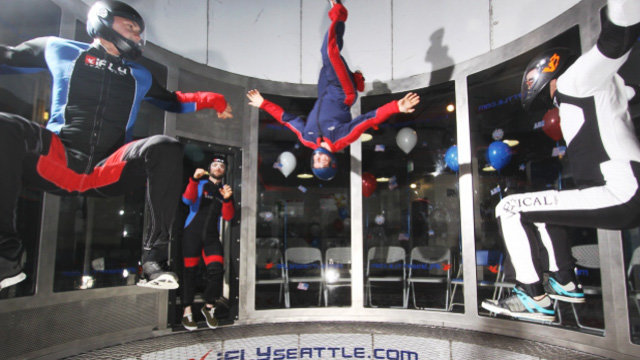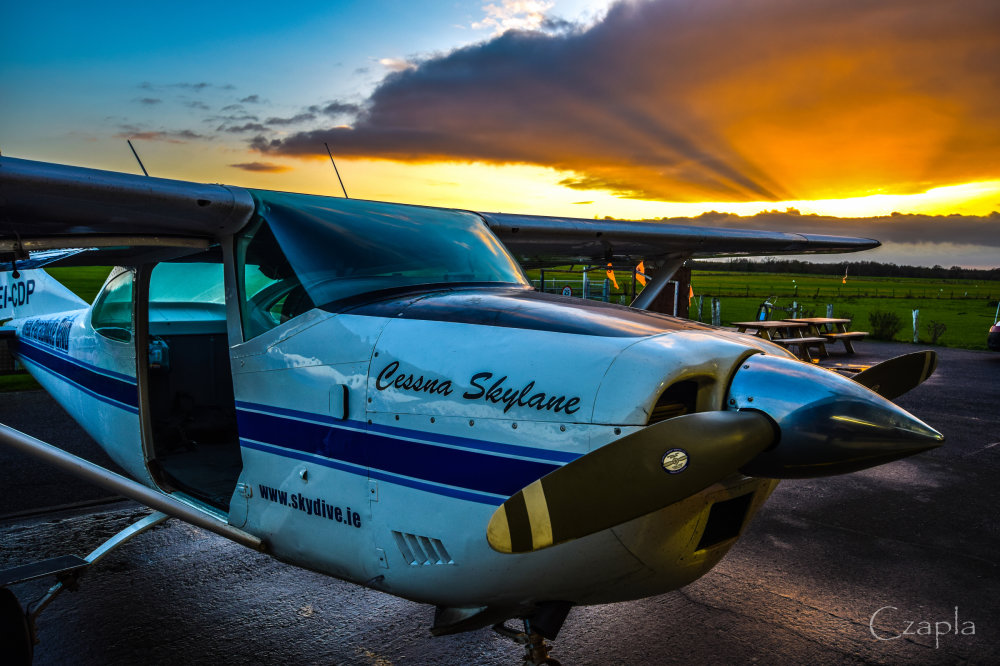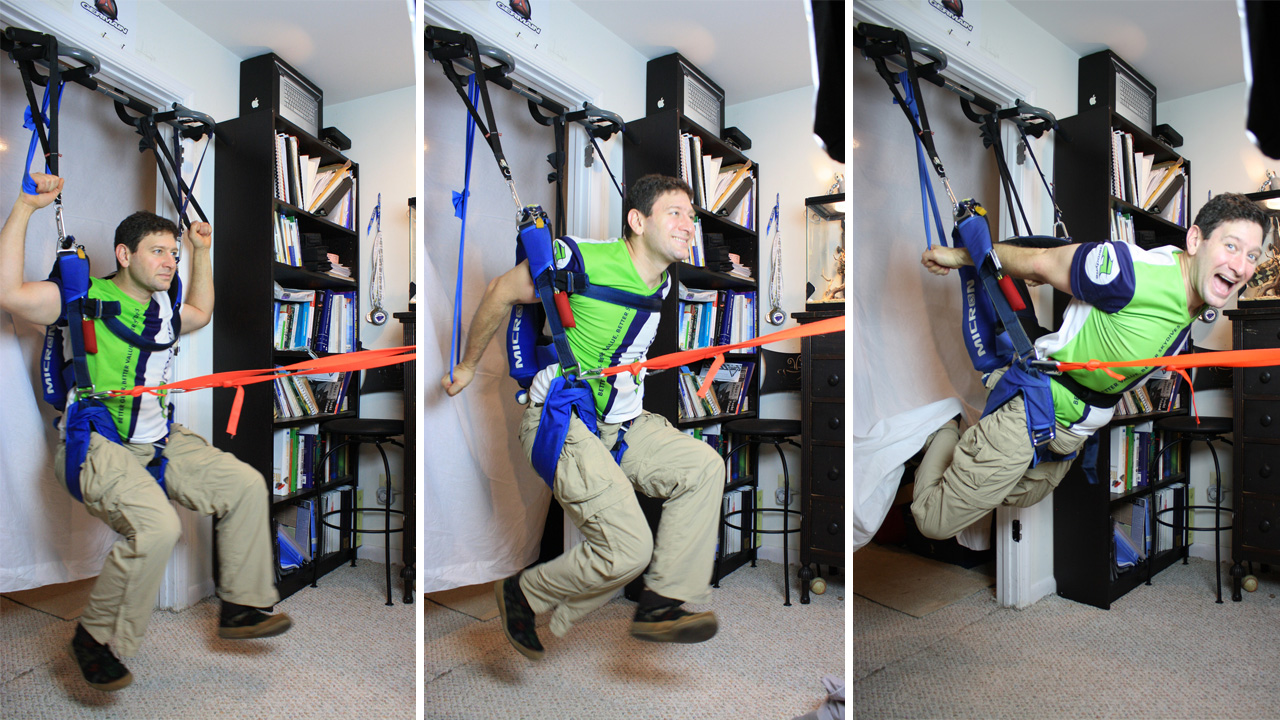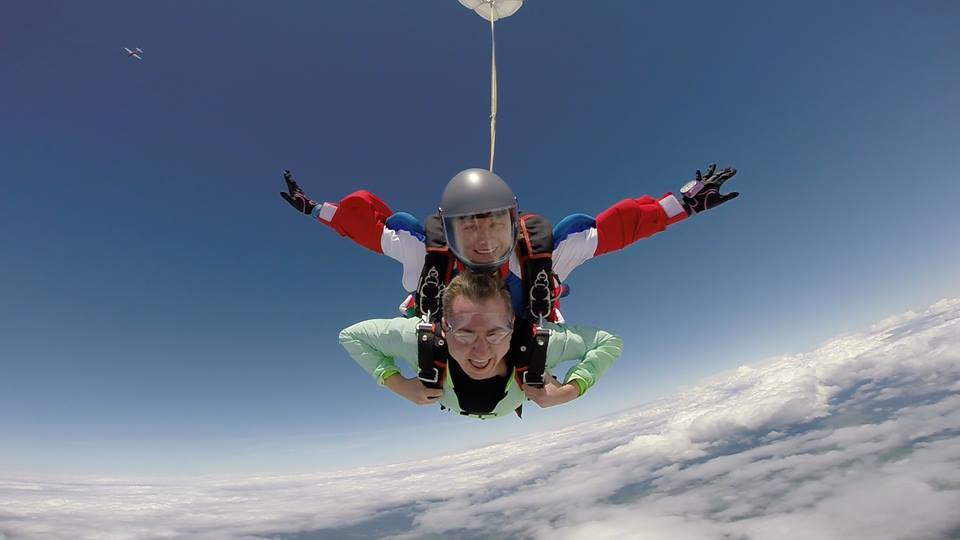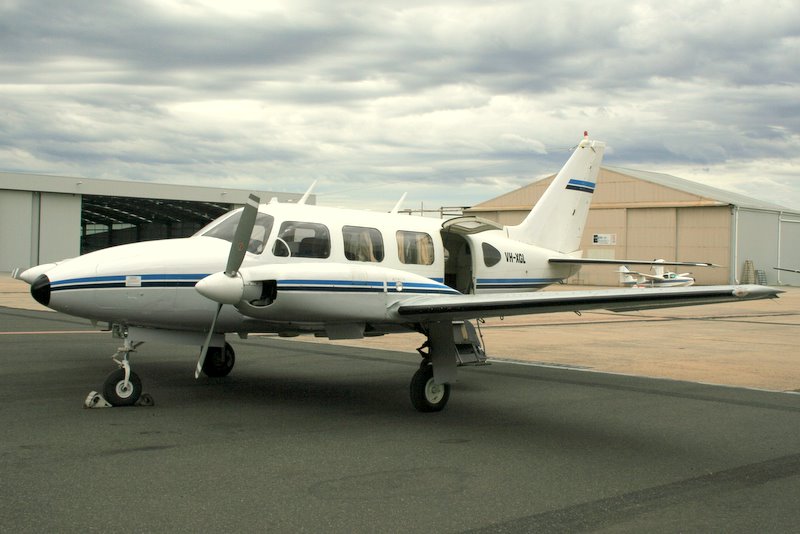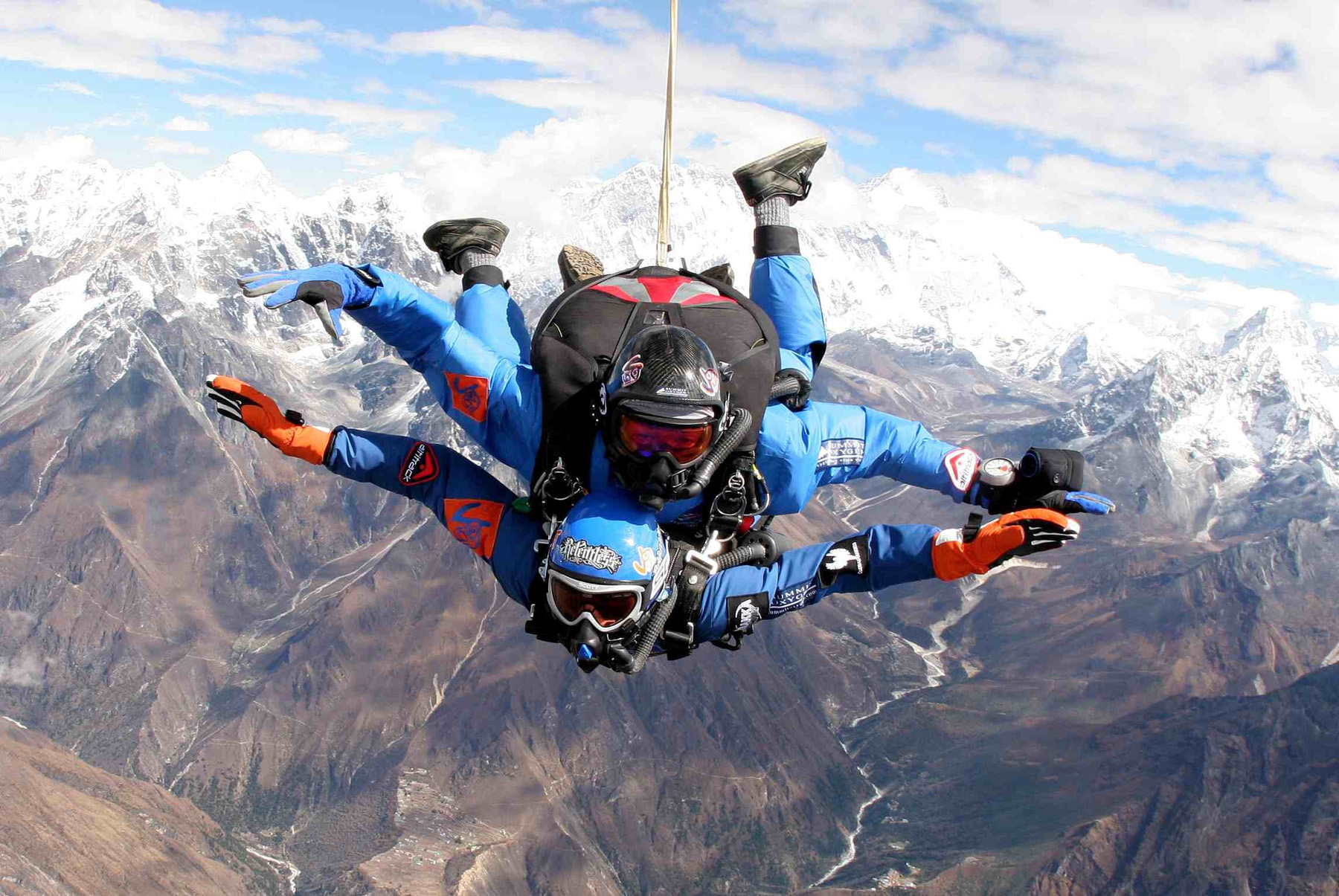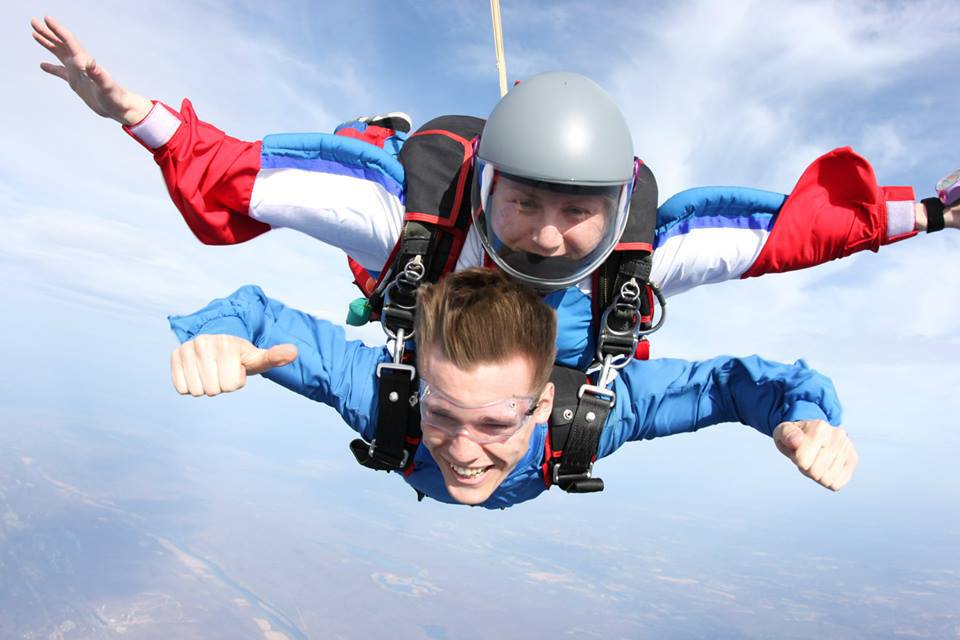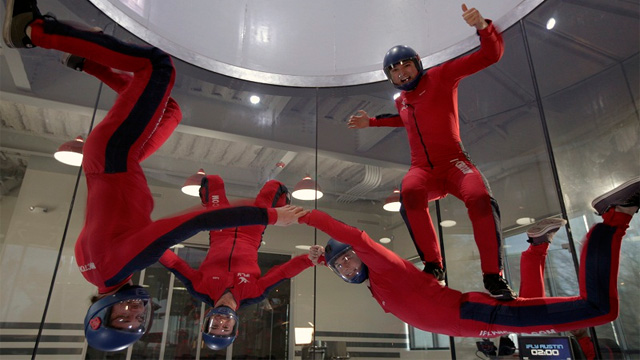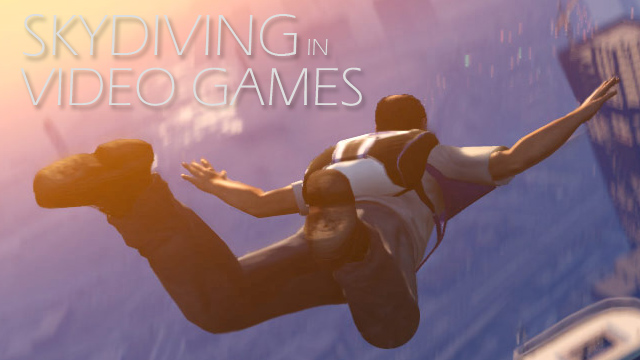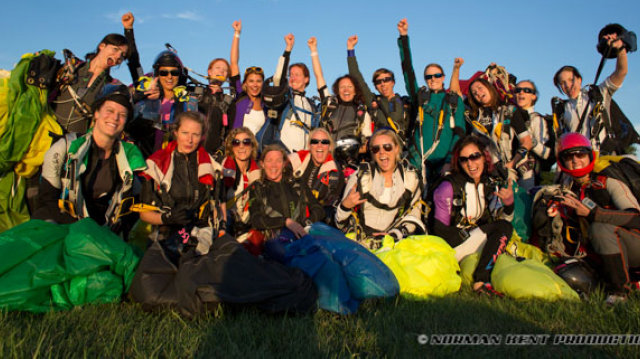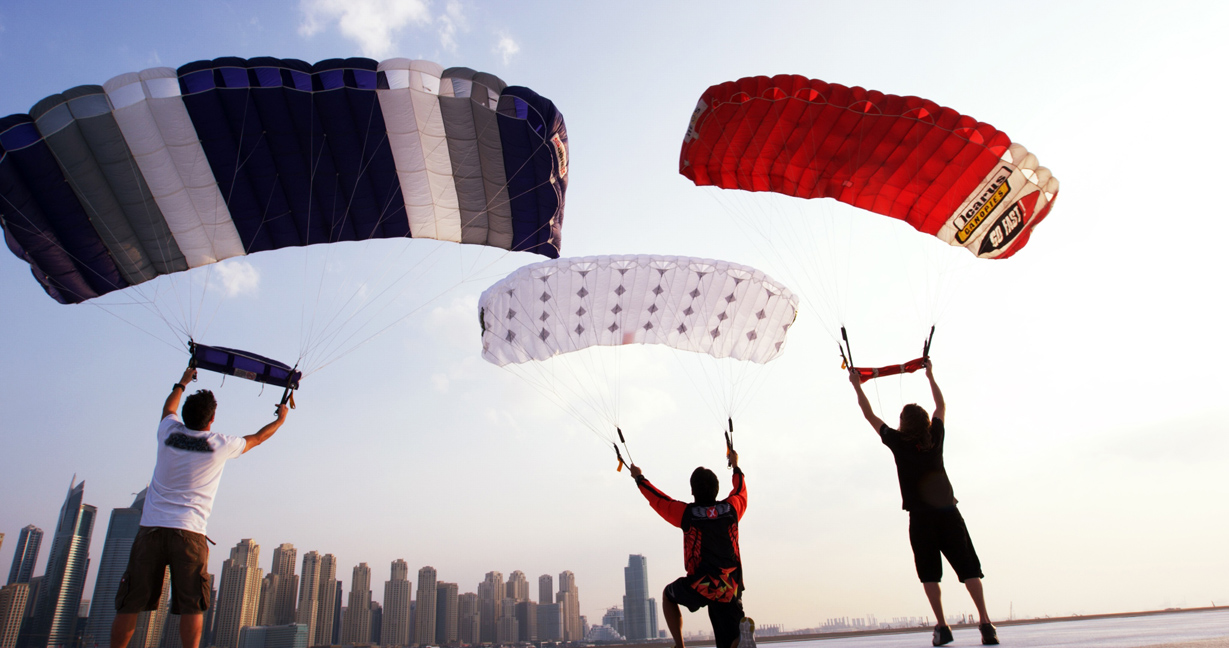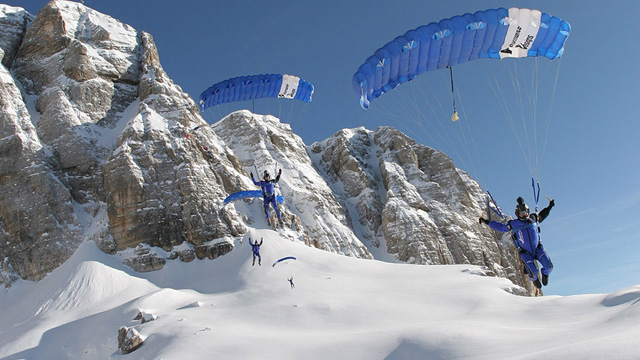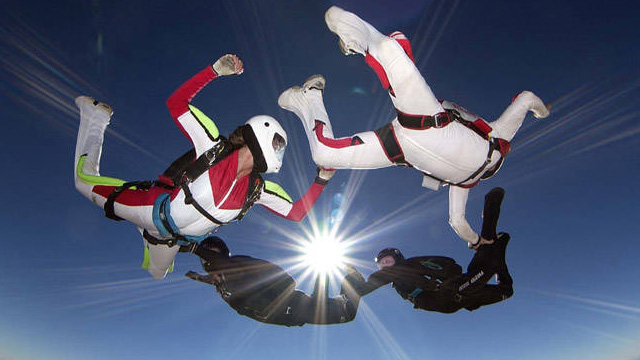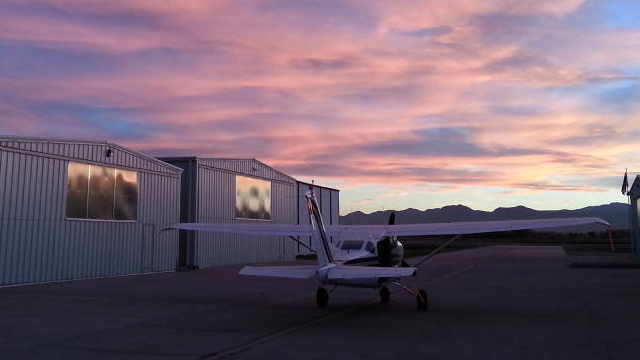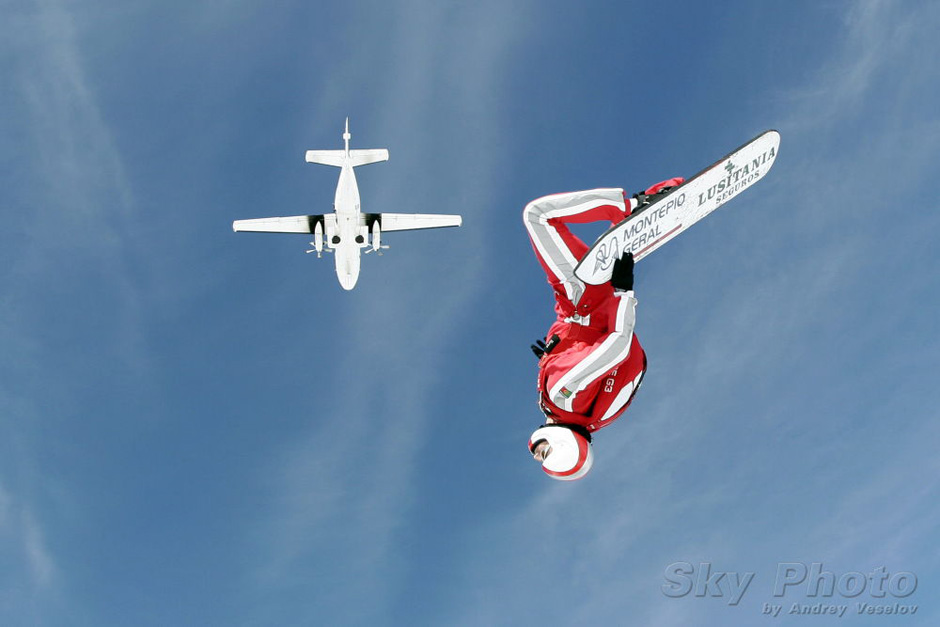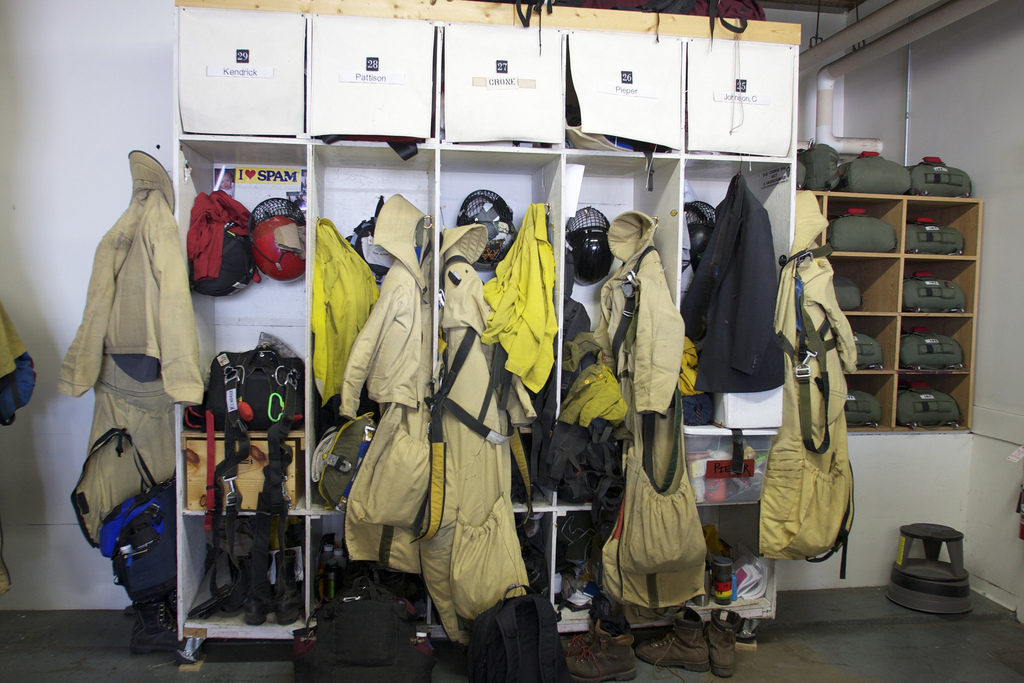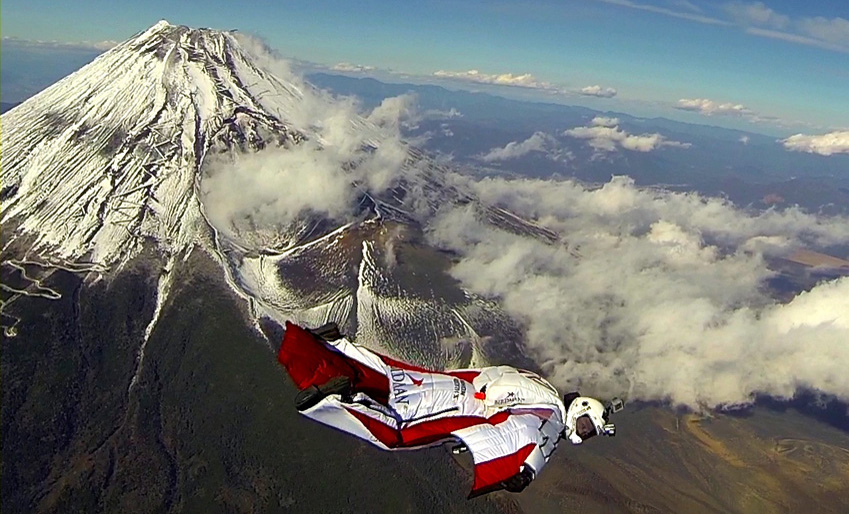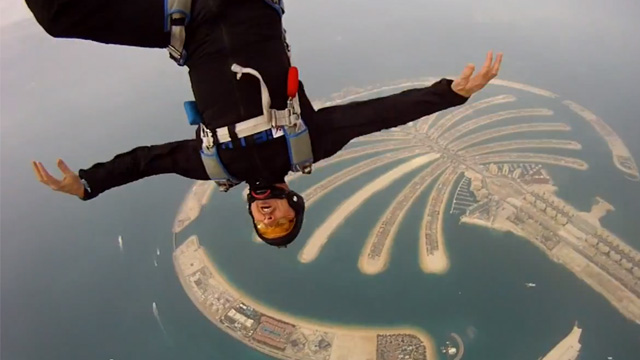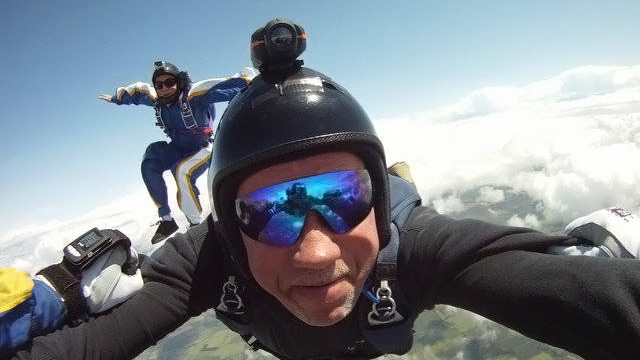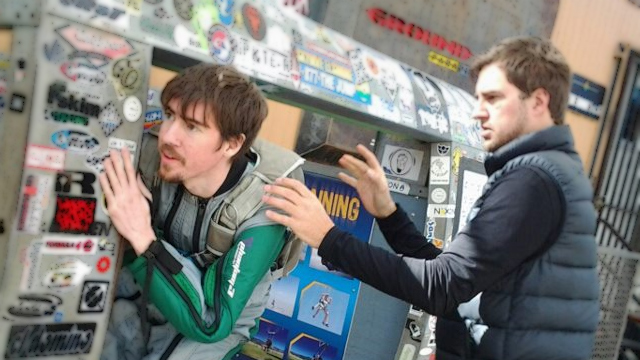Search the Community
Showing results for tags 'general'.
Found 265 results
-
The expansion of iFly indoor skydiving centers continues, this time with development planned for the Middletown, Ohio area. Start Aviation LLC and iFly Corp recently signed an agreement that would see a vertical wind tunnel build in Middleton. Though the exact location of where the tunnel will be built is still undecided, Middle Regional Airport has been listed as a potential location. Start Aviation LLC is the operator of Start Skydiving, a dropzone that has in recent years shown itself to be one of the best in the country, while iFly has shown its dominance in the global wind tunnel market with more than 20 wind tunnels located around the world, and the company continuing to show impressive growth. While still in the early stages, aspects of the project have been released; such as the plans for the indoor skydiving location to include a restaurant, classroom and an office. With the development of the Middletown tunnel, there will be a total of 15 iFly tunnels in the United States, several of which have been established in the past couple years. With the next closest tunnel being located in Chicago, the city hopes that the new attraction will bring in visitors from surrounding locations.
-
Image by CzaplaAs the skydiving market continues to grow and more dropzones open their doors, finding creative ways to make your DZ stand out from the competition is more important than ever. One simple way to gain a competitive advantage is to add lagniappe to your arsenal of marketing tools. What is Lagniappe? (pronounced lan-yap)A Cajun French word often associated with New Orleans, lagniappe is best defined as “a little something extra.” If you've ever checked in at a Hilton DoubleTree Hotel and enjoyed a warm chocolate chip cookie at the front desk, you’ve experienced lagniappe. If you’ve flown Southwest Airlines and checked your bags free of charge, you’ve experienced lagniappe. These “little extras” are not an afterthought, they are an important component of the marketing strategy for companies big and small around the world. Small Business Strategy: LagniappeMy parents run an eco-kayaking tour (Antigua Paddles) on a small Caribbean island. Everyday they compete against 98 other companies for the same cruise ship passengers visiting the island for a few hours. The competitive environment is cutthroat, and my family has needed to use some creativity in order to stand out. Over the past few years, TripAdvisor reviews have become the number one source of marketing for businesses in Antigua. In order to trigger lots of 'talk' on TripAdvisor, my parents have made lagniappe a key component of their marketing strategy and it shows: they are currently ranked number 3 out of 100 attractions on the island. How They Do It - After a fabulous three hour tour combining kayaking, hiking, and snorkeling, guests are offered two unexpected things: a chilled, scented face towel to freshen up and homemade banana bread, baked fresh every morning at 7:00am. Their guests love it. If you take a moment to read some of their TripAdvisor reviews, you'll see just how many people comment on the face towels and banana bread... it's literally like putting the cherry on top of a dessert. How to Use Lagniappe at Your DZHere are a few examples of how you can incorporate lagniappe into your daily operations at the DZ: 1. Free 'ice pops' or freezies. This is an inexpensive gesture that your guests will love while waiting to make their skydives especially during the warm summer months. Kids love this and if you can please impatiently waiting children, parents will love you for it! 2. Complimentary Coffee Mug or Shot Glass - This is a great lagniappe to gift after the skydive. It can be a bit expensive, but there are sources on the web to get some great deals. Check out alibaba.com for the most inexpensive logoed gift ideas. 3. Starbucks Gift Card - If someone leaves a positive review on your Facebook page after their skydive, send them a handwritten thank you note with a free $5 Gift Card to Starbucks or another local coffee shop. If they loved you before, they'll love you even more now! And, added bonus, they’ll probably talk about your unexpected gesture on their social media channels. 4. Discount Fish Bowl - After your guests have made their skydives, have them reach into a fish bowl to draw a ticket for a discount for any merchandise in the store. Discounts range from 5% to 25% off... of course the majority of the tickets will be for 5% off. This is fun for the customer, builds goodwill and it'll encourage guests to think about buying merchandise... everyone loves a deal! 5. Free Reserve Repacks - Reward your licensed skydivers for buying their systems with you instead of going to the big name retailers in the magazines - offer two free reserve repacks when purchasing directly with you. 6. Free Tours for Kids - On a weather hold? Get the kids together and take them to the loft. Allow them to put on a rig, show them the cutaway procedures, teach them where the reserve and main are. As mentioned above, if you can make the kids happy by enhancing their experience, you'll make the parents very happy. The only cost is time. 7. Special Cards - Have your reservations team find out if there are any special occasions with anyone in a group... bachelor parties, birthdays, anniversaries etc. When the individual arrives, surprise them with a special card signed by the staff wishing them a great day in the sky! Executing this is easy - have the staff sign a dozen cards in advance and then have the person taking the reservation, customize it. The recipient will be amazed! 8. Fresh Cookies - This is doable and awesome. Take a page from DoubleTree or Otis Spunkmeyer and offer free cookies to each person after their jump! Good incentive to get people into your store... all you need is a small toaster oven and cookie dough. 9. Personalized Thank You Card for AFF Students - Have AFF instructors fill out personalized cards on a "Jump Well Done" and mail them the same day. Your AFF students will feel encouraged and feel part of the DZ family when they receive their card on Monday. 10. Give Out a Free Beer - Have a bar at your DZ? If so, award your guests with a ticket for a free draft beer or soda. Getting people in the bar after their jump will probably result in some food sales. If you don't have a bar on the DZ, work with a local bar in town...they'd love the extra traffic and your guests will enjoy a cold one at no cost to you!
- 3 comments
-
- industry
- general safety
-
See more
Tagged with:
-
The winter months are a great opportunity to catch up on all the things we weren’t doing throughout the summer, such as working on our homes, engaging in winter sports, and mending relationships with our non-skydiving friends. It is also a time that can lead to a dulling of our skydiving abilities, and our memory of correct procedures. As a result, the period following a substantial break can be a very dangerous time for skydivers, and a great many injuries come as a direct result of a lack of currency. If we are creative, however, we can keep our skydiving minds warm even when it is cold outside. If you own a rig, for instance, it is quite easy to set up a hanging harness in your house. We have been using a secure chin-up bar for many years, and it works great. All you need is an extra pair of risers, a set of soft links, two climbing carabiners and a doorway. A retired pair of 18 inch risers work best for most doorways, to keep you high enough above the ground to create a good simulation. First, attach the tops of the spare set of risers together with the soft links. Next, loop the risers over the chin-up bar, and attach a carabiner to the large ring on the bottom of the risers. Then all you need to do is clip the carabiners through the three ring attachment hardware on your rig and you are ready to train. Keep in mind that if you are unsure about the security of your chin-up bar or door frame structure, be sure to wear a helmet and have a cushion underneath you just in case things go badly. Some of you are thinking, I don’t need to practice pulling my handles all winter, I am a licensed skydiver. I know what I’m doing. Although we all know this is not the truth, everyone needs to practice their emergency procedures, the point of hanging yourself up goes far deeper than just practicing pulling your handles. There are a great many things you can rehearse and learn while suspended in your own rig. I am not talking about the tired old harness at the dropzone that does not remotely resemble the one you jump. I am embarrassed for our sport when I do not even find one of these old beaters hanging at a training facility. That needs to change. No, I am talking about your own personal rig: your handles, your harness, your home. There are several things you will love about this initially embarrassing practice. One huge benefit is to practice transitioning from your deployment harness configuration to the flying and landing configuration. For most of us, this involves loosening the chest strap, and experimenting with different methods of moving the leg straps slightly forward to make yourself more comfortable. By sitting in the harness for long periods of time, your body can change and become stronger in the ways that allow you to be more comfortable under canopy. You can also explore harness turn inputs by swinging side to side by loading one legstrap at a time, which may illuminate a need to relocate the elastic butt strap between your legstraps. This “freefly bungee” is great for preventing a legstrap from sliding forward in freefall, but if located too high or too short, can prevent harness turn capability while under canopy. A “fastex” pinch-release can allow you to remove this strap entirely, and hanging harness training can prepare you for the new muscle memory of your procedural change. Hanging harness training will also allow you to practice flaring and leaning forward for landing. You can even tie webbing straps to the legstrap articulation hardware and have a friend pull your legs forward when you flare to simulate the pitch change, allowing you to rehearse leaning forward as the canopy pitches back to a higher angle of attack. This will help you to remain in balance for the touchdown, and by rehearsing this process in your downtime, you may even emerge from the ice and snow with more skill than the previous summer. Further, you can maintain your upper body strength in the canopy-specific muscles by lifting yourself up by the front risers dive loops, and by pulling on elastic bungee cords or “thera-bands” attached to the chin-up bar. These are easily acquired from most physical therapists, drug stores or apothecaries. By using carabiners to attach yourself to the suspension system, you will be able to avoid the need to remove your main parachute for the simulation. It will feel slightly different with your main parachute still in the pack tray, but it will be close enough to make the practice a valid training method for staying fresh through the chilly months. It is also helpful to remove your main from time to time, and attach the suspended risers to your rig’s three ring system to practice cutting away. A mattress, helmet and spotter is a really good idea for this practice. This will help you to get a clearer picture of what it actually feels like to chop your main, and may even result in your awakening to the fact that your method of pulling the handles needs work, or that your cutaway system requires lubrication. Be sure not to actually pull your reserve ripcord unless you have a rigger handy. When you do bring it in for your spring repack, definitely give that reserve ripcord a go in a full simulation. All good training requires accurate, complete rehearsal of what you will need to do in the sky. For wingsuit flyers, a hanging harness can be a fantastic training tool for staying current with the post-deployment sequence. Gear up fully and practice riding through the deployment with your knees together and your hands on the three rings. Then rehearse unzipping your arms, unstowing the toggles, loosening the chest strap and then unzipping and dressing your legs. For increased realism, try aiming a carpet blower up at you at the approximate glide angle of the canopy to simulate the relative wind. This will add the pressurization of the wings, making the process surprisingly like the real thing. If you wear your helmet as you do all of this, the simulation will be quite realistic and highly beneficial. Such rehearsal will be very helpful for keeping the habits that save your life fresh in your mind. Be sure to practice malfunction procedures with your wingsuit on as well. The only thing you need to worry about is the doorbell, and the awkward explanation to the mailman. Freefall skills are harder to keep fresh, unless you have a wind tunnel nearby. There are ways, however, to keep sharp without spending a lot of money. An FS “creeper” is a fantastic tool for practicing your belly flying, and creeper parties are a fun way to get jumpers together in the colder months. You can even have creeper competitions to stay on your game. It may feel a bit silly at times, but it is far better than trying to remember the dive pools all over again when the snow melts. I also find that an indoor swimming pool is a great asset in the winter, allowing you to work in three dimensions and play with new possibilities, especially if you have fun-loving skydiver friends. Nose plugs are really helpful for upside down swimming. I also enjoy pulling out my gear in the winter and taking the time to slowly and methodically look over all the details I may not have had the time to check during the fast-paced summer months. Even if you are not a certified rigger, this is your gear and you need to be comfortable with every aspect of the equipment that saves your life. Pull out your main and climb inside your cells; inspecting the crossports, the seams, and the reinforcing tapes. Look for broken stitches, pulls, and damage to the fabric that may have occurred during the jumping season. Inspect the bottom of your lines, your connector links and risers. Be sure to run your finger inside the slider grommets to check for rough spots that will damage your lines. You can also check your line trim by cutting the main away and tying the risers to something secure like a door hinge. By pulling tension on each line group in bilateral symmetry and comparing back to the center cell, you will learn volumes about the condition of your parachute. If you have spectra lines, you will be amazed how much your outboard lines and brakes will shrink over time through friction against the slider grommets, and from lack of loading. For a detailed education on main parachute inspection and an eye-opening retrimming technique, check out this video. Another powerful way to keep your head in the skydiving game is through watching videos. There is a great deal of eye candy on the internet, although not all of it falls under the category of training, or even positive visualization. Be careful what you watch, visualization is a powerful form of training, and some of what you watch can pave the way to higher levels of fear. Furthermore, watching lots of poor technique can dull your image of the “right” way to fly. Fortunately, there are some fantastic instructional videos available, which can actually expand your skydiving knowledge as the snow falls. The Australian Parachute Federation, for instance, created a fantastic malfunction video series called Cutaway. Additionally, here is a link to an in-depth Parachute Flight Safety Video Series, a canopy course ground school for all levels that will far exceed your expectations. To further the goal of expanding your skydiving skill through knowledge, there are also several incredible podcasts on the internet that can bring a wealth of knowledge to your computer, phone or tablet. Skydive Radio, Jump Twenty Six and Radio Skydive UK all provide a wealth of information that can enhance your abilities and literally extend your life. Interviews with leaders in the sport will expand your knowledge of the essential history of skydiving, safety practices, and secrets to get the most out of your airtime. Best of all, you can enjoy this learning in the comfort of your own earplugs. When we remember that most of what it means to be a skydiver actually happens on the ground, it becomes more than obvious that we do not need to turn off our skydiving brains once the chill hits the air. Although it is true that a flight to someplace warm is the best way to stay current in the winter, it is not the only way to continue being a skydiver. With a bit of open-minded creativity and ingenuity, we can continue our training all year long, and even emerge in the springtime with a deeper understanding than we had before. Freezing our thoughts about something we love this much not only increases our risks, it also costs us a piece of ourselves. Pull out your gear and keep the feeling alive, you will be glad you did. -BSG Brian Germain is a parachute designer, author, radio personality, keynote speaker, and has been an active skydiver for 30 years. You can get more of Brian’s teaching at Adventure Wisdom, Big Air Sportz, Transcending Fear, and on his vast YouTube Channel
-
Generally when folks consider learning the extrem sport skydiving, they think of getting unbelievable adrenalin rushs. The truth is that these principles are possibly polar opposites. Provided you were truly trying to feel free in the sky, there are possibly very distinct steps you must make in an attempt to do well with realizing your calling. [Image 1] Here are tips to start you off: -- Living healthy Living healthy is an important part of the process that someone looking to learn the extrem sport skydiving should do. If you are already accustomed to living healthy, when it's time to learn to skydive, it would be a routine you do naturally. -- Being sporty An integral aspect of the discipline that is required to prepare for learning the extrem sport skydiving involves being sporty. When you be sporty, it primes you to flourish in the best mindset to realize the utmost objective of learning the extrem sport skydiving. [Image 2] -- Getting no acrophobia The biggest oversight that someone could experience when preparing to learn the extrem sport skydiving is falling short with this vital tip. If you decide to not consciously practice getting no acrophobia, it can be impossible to prosper. That is how contingent your accomplishment is on getting no acrophobia. Assuming you are curious how to get no acrophobia, then continue exploring for we will explore that here! We wish to analyze the journey to learning the extrem sport skydiving effectively. We can equip you for a different level of satisfaction. Please consider a couple thoughts one must think of before attempting to learn to skydive. Before learning the extrem sport skydiving, you must figure out and make sure that learning to skydive is the right choice for you. Before learning the extrem sport skydiving, it helps to analyze your day-to-day practices. Then examine that against a person already able to feel free in the sky. You ought to analyze someone that is effectively doing what you wish to achieve. Then see if you're reflecting what they execute. That is a beneficial starting point. Here are questions you ought to challenge yourself with: Do you want to feel free? Want an amazing Adrenalin Rush? Do you want to keep away all the distractions of life? [Image 3] Ideally, you answer was "yes" to these questions. Then probably learning the extrem sport skydiving is the right activity for you and best wishes for executing the plan toward realizing your calling by continuing to read! Before kicking off what is generally needed to prepare, we ought to narrow in on some measures that someone should recognize before starting. Besides, learning the extrem sport skydiving is a voyage. You ought to prepare for a journey before executing the plan. Learning the extrem sport skydiving requires considerably more than deciding one evening to say, "wow, I am going to learn the extrem sport skydiving." Sure that can be a starting step. However to accomplish a bit of benefit with learning the extrem sport skydiving, you should initially prepare mentally. Learning The Extrem Sport Skydiving - A Look Back Realize you aren't the first individual in the universe that has the ambition of learning the extrem sport skydiving. Actually, there are tons of people all around that hope for to learn to skydive. The harsh truth is that hardly any will actually commit and achieve it. If you assess individuals who have done well in learning the extrem sport skydiving either recently, or back in time, you will unveil something comparable among those who have grown successful. They appreciated what was involved before commencing, and they knew what breed of individual is prone to prevail. When you understand what breed of character it requires to truly learn the extrem sport skydiving, there is nothing that will block the pathway amidst you and your satisfaction! Learning the extrem sport skydiving has a tangible attribute to it. However any action that you plan ahead of time will bring a greater result. You'll unveil the force behind your will will bring you toward your goal. Don't think of getting unbelievable adrenalin rushs. Learning the extrem sport skydiving involved a person to be forever and strong-willed. We know that. Today we are primed to to analyze the steps involved with learning the extrem sport skydiving so we can appreciate our future accomplishments. You have already asked yourself: "Do you want to feel free?" Honestly, you truly had to ask yourself. Those that responded no to this topic will remain incapable to merely take any action to learn the extrem sport skydiving. You asked "Want an amazing Adrenalin Rush?" You could not have reached to this point if you responded no. The harsh truth is a special temperament is involved to hope for one thing, and a completely different personality to ultimately do it. [Image 4] Congratulations for existing as the breed of individual that gets going. Thinking back, it is feasible that people that attempted to learn the extrem sport skydiving and went wrong probably did not prepare themselves. By acknowledging the initial questions to establish if you are possibly a suitable personality to learn the extrem sport skydiving, you are aware of what is recommended to get there. Just recognize, getting no acrophobia is a essential provision. Every time your mind conveys that learning the extrem sport skydiving is unfeasible, recognize that a person who is getting no acrophobia will ignore the disappointment and target their thoughts on success. Let's analyze what is needed to prepare seeing that our thoughts are settled!Learning The Extrem Sport Skydiving In Everyday Life Learning the extrem sport skydiving should be regarded as a lifestyle. It is an important part of the process that you may integrate into your lifestyle in many ways. Actually, while you are working during your training to learn to skydive, you ought to analyze how learning the extrem sport skydiving can change your essence. Do you recall being presented with these pointed questions: Do you want to feel free? Want an amazing Adrenalin Rush? Do you want to keep away all the distractions of life? Here are questions which appoint qualities that establish if you were able to learn the extrem sport skydiving. These are lifestyle options. answer was "yes" to these pointed questions, you were not just substantiating that you were able to learn the extrem sport skydiving, but rather, you validated your lifestyle practices. By recognizing the duty that these qualities play in your ordinary routines, you are understanding the duty that learning the extrem sport skydiving presents in ordinary routines. No one said that learning the extrem sport skydiving is simple. All rewarding activities require dedication. Learning the extrem sport skydiving is no exception. When you analyze the preparation stages that must be completed prior to learning the extrem sport skydiving, these very preparation stages can be beneficial in other areas of life. Living healthy, being sporty and getting no acrophobia ought to be regarded as acts that transcend learning to skydive. While certain of the acts are specific to learning the extrem sport skydiving, several of it can develop related spheres of life. Actually, learning the extrem sport skydiving does require a deviation in your judgement. The forever quality that is needed to learn to skydive will change your essence. In moments, you can be making evident a forever quality in other areas of life. That is the beauty of learning the extrem sport skydiving that most people fail to consider. [Image 5] Learning the extrem sport skydiving is more than learning to skydive. It is a lifestyle in numerous ways. Anytime you assess this as a lifestyle, you can reap the various benefits of learning to skydive in day-to-day overall life. Metaphorically, it requires a certain attribute to realize the utmost objective alltogehter. It is practical to allow each of these gains to develop your essence. One must have an amazing quality to learn the extrem sport skydiving too. That is another characteristic that critically influences your essence. The more you call on that quality to learn to skydive, the more you can identify that attribute within unrelated areas of life. The majority who are committed to the general goals will find learning the extrem sport skydiving wholly delightful. Congratulations on executing the plan toward this lifestyle choice!
-
CALGARY, June 26 (Reuters) - A Canadian skydiver who was knocked out by a teammate during a jump, then plunged nearly half a mile (more than half a kilometre) to earth, was awarded C$1.1 million ($748,000) in damages by a judge who ruled the teammate was negligent. Gerry Dyck, an expert who had made about 1,800 jumps before the 1991 mid-air accident, sued Robert Laidlaw, charging the team member failed to take proper care to avoid the collision that caused him severe brain injuries and ended his career. The case raised questions about how much risk one can expect in an inherently risky sport, and included expert testimony from a veteran Hollywood stuntman known for his work in several James Bond movies. In his 19-page decision issued late last week, Alberta Judge Peter Power ruled Laidlaw violated well-established safety procedures by failing to keep a proper lookout for Dyck while manoeuvring his body in preparation for opening his parachute. "The defendant owed a duty of care to the plaintiff which was breached by the unchecked turn into the plaintiff's air space," the judge wrote. "This act, which was foreseeable, was negligent and resulted in substantial harm being inflicted on the plaintiff." Dyck's injuries were severe enough to prevent the 43-year-old former surveyor from holding a job ever since. "The judge found that this is not a sport about people falling from the sky like flies, it's a sport that's highly regulated, that's highly controlled in terms of procedures and prescribed practices," Dyck's lawyer Greg Rodin said on Monday. During the trial in Calgary this spring, the judge heard the eight-person team jumped out of a plane at an altitude of 12,500 feet (3,800 metres) on May 5, 1991. The members went into formation to perform manoeuvres while free-falling above the farmland near Beiseker, Alberta, 47 miles (76 kilometres) northeast of Calgary. The jumpers were to perform manoeuvres until they fell to 3,500 feet (1,067 metres), then "track off," or steer away, so they could open their parachutes. As they opened their chutes, Laidlaw's elbow hit Dyck in the head, knocking him unconscious and causing the two men's parachutes to become tangled. At about 2,200 feet (670 metres), Laidlaw managed to free himself and land using his reserve chute. But Dyck, out cold, remained entangled and plummeted to earth, sustaining severe brain injuries and broken bones in his right arm. Laidlaw had testified that as he moved away from the centre of the formation, he lost sight of the other jumpers in his peripheral vision, indicating to him that he was sufficiently clear of his teammates. Testifying on behalf of Laidlaw was B.J. Worth, an expert skydiver and stuntman, who co-ordinated and performed aerial stunts for numerous motion pictures, including such James Bond films as "Tomorrow Never Dies," "Goldeneye," and "License to Kill." Worth's testimony did not convince the judge, however.Dan Downe, Laidlaw's lawyer, said he was surprised by the ruling, and was reviewing it to determine whether there were grounds for appeal. "We were quite confident that the trial evidence indicated that Laidlaw did not make any turn prior to collision, and he was the only eyewitness because Dyck was rendered unconscious," Downe said. Rodin said Dyck was pleased with the result because it proved his right to compensation after nine years, and that he believed the skydiving community would "benefit from a decision that holds jumpers accountable for their conduct in the sky."
-
Image by August Haeuser I want to come clean with a confession: Jerry Maguire is one of my favorite movies of all time. There, I said it. While I'm being vulnerable… I never miss a week of Survivor either. (Don't' judge too harshly). Now that I've totally opened myself up about my tastes (or lack thereof) let's roll into the opening scene of this amazing film. The movie begins with super sports agent, Jerry Maguire (Tom Cruise) writing a mission statement (not a memo) entitled the "The things we think, but do not say." This mission statement was an inspired piece of clarity that brings to light that the company (Sports Management International) has lost site of its purpose. It became more about the money and less about the client. Jerry's mission statement actually suggested having fewer clients and making less money. Of course, Jerry was promptly fired. So what does this have to do with the business of skydiving? Everything… except for the fewer clients and less money part. There is a definitive shift occurring in the business of skydiving. USPA membership numbers indicate a slow and steady increase over the past decade, but student numbers appear to be decreasing at many DZ’s around the country. Many blame poor weather in 2013, and it was a factor, but it goes deeper. There is a hidden war raging in the game of search engine optimization (SEO) whereby third party organizations are rising within search rankings and picking off an ignorant public and overcharging them for their skydives. Mix this with the oversaturation of daily deals (in nearly every marketplace), an influx of newer dropzones and everchanging and inconsistent weather patterns and it’s little wonder that many established DZ’s are seeing a decline. An Uneasy PanicThis change is being fueled by the way many DZO’s are reacting to conditions happening before our eyes. Similar to climate change, we’ve been aware of it, but the realities of what it actually means hasn’t conceptualized until now. Rather than pausing and seeking out correct action, many DZ decision makers are making quick, reactive decisions to try and boost volume. This reaction is being driven by the panic felt in seeing the numbers decline despite the economy actually improving. In the case of daily deals (Amazon Local, LivingSocial, GroupOn) many DZO’s feel threatened that they are losing market share whenever a competing dropzone offers a deal. It takes discipline to not follow suit and offer a deal at a similar price. The majority of DZs do follow suit which decreases the demand for full-retail-priced student skydives which drives down the price significantly. This is scary when one considers the costs associated with running a DZ. The only way to offset these lower prices is to have very high volume in an extremely efficient operation. The model for high volume becomes compromised when more competitors enter the marketplace to get a piece of the action. The response? Continue to offer more daily deals, which forces DZO’s to enter a vicious cycle that they can’t get off of. This model that many DZ’s find themselves is not sustainable and will result in either more cutting corners to make the numbers work (which has the potential of elevating risk), going out of business or surviving long enough until others go out of business first. What The Hell Do We Do?So, the news above seems a little dire. I’m not an economist, but I’ve had the advantage of traveling around the US and different parts of the world looking at the industry from a business perspective. With a 13,500 foot view, here is what I would suggest: 1. Get Off The Train. At some point, the majority of DZs who are on the daily deal train will have to get off as they will recognize the lack of sustainability for the long term. The problem with getting off the train is the sudden cash shortage. Downsizing may be required whether it be with an aircraft, equipment or the size of staff, but it doesn’t have to be permanent. Decreasing expenses during this transition is key. Before pulling the plug from the daily deal cycle, begin making preparations for the cash shortage. 2. Normalize Pricing. Once off the train, begin normalizing pricing whereby each student jump made is profitable once again. Volume may not be as high, but the business will be more sustainable. 3. Win the Battle of Search. Amongst the price gouging, there’s actually some good news occurring. Third party vendors are charging up to $339 for a tandem skydive while offering lousy customer service and veiling a lot of truth to the customer. So where’s the good news? There are customers willing to pay a lot more than we’re currently charging to make a skydive! These third parties are pulling these customers in because they are winning the battle of search. Each DZ must invest in strong SEO practices to win this difficult battleground. Lately, more and more DZs have been joining these networks to offset the drop in business which only feeds this monster. Rather than join these networks, we must beat them. 4. Look a Million Dollars. Make the investment to have branding and website design showcase your DZ as a major attraction within the marketplace. Trading out jumps for the creation of a website with a local jumper will no longer cut it. Creating a website is one thing. Creating a functional website with great design is another. 5. Win the Customer. Throughout the last several decades, the skydiving industry has focused more on the skydive and less on the overall customer experience. DZs must focus on utilizing word of mouth marketing and transforming customers into joining the marketing team of the dropzone. Be an Ambassador of QuanWhen Jerry Maguire learned that he was being fired, he rushed back to his office and called every client he could to try and get them to stay with him as their agent. Only one demanding client stayed… the venerable Rod Tidwell (Cuba Gooding Jr). Jerry would eventually have to rebuild his business doing things the right way by being professional and focusing on the details. The same holds true for our industry. We must be flexible enough to change as the skydiving industry of today is vastly different than the industry of ten years ago.
- 7 comments
- 4
-
- industry
- general safety
-
See more
Tagged with:
-
A plane crash near Topolów, Poland this weekend killed eleven people and left one seriously injured. Shortly after departure from Skydive Rudniki, given the statements of witnesses on the ground- it would appear that the plane began experiencing problems, with reports of strange noises coming from the engines. The twin engine Piper Navajo aircraft was carrying 11 skydivers and the pilot when it crashed. There were conflicting reports with regards to the final moments before the crash, with some saying the plane caught fire on impact, while other witnesses were quoted saying that the plane caught fire moments before impact, when it was seen flying close to the houses. Another quote from a witness suggested that some of the skydivers may have tried to exit the aircraft prior to impact. At the time of publication, there was no official cause of the accident. Though some news reports indicated that the plane was over capacity.
-
A Himalayan Adventure That Continues To Reinvent Itself In late October 2014, Everest Skydive is set to enter into it’s seventh year of operation and make it’s eight expedition into the Nepali Himalaya bringing skydiving back to one of the earth’s most remote locations. In between the traditional scenery of climbers, trekkers, sherpas and porters, skydivers and their parachutes will once again be seen flying through the skies of the Khumbu region and Sagarmatha National Park. Arriving at this point, entering a seventh year after the first skydives were made in 2008, has been a path as challenging as any of the paths that lead to Everest Base Camp. Each year, as logistical challenges emerge and operational needs change, the expedition faces a year long challenge to bring skydiving back to Nepal. “Eleven months of hard work for one month in the Himalaya working even harder” has been the mantra of the team and expedition, composed of an international mix of skydivers and mountaineers. Over the years Everest Skydive has seen many changes. Whether it was aircraft support shifting from the Pilatus PC-6 to the AStar B3, or helping promote charities like Global Angels, to opening up new remote dropzones, the Everest Skydive expedition has constantly evolved to meet the needs of the local Nepali tourism industry and to bring high altitude skydiving and canopy flight to higher and higher dropzones. Seven years ago, the idea of safely landing sport and tandem parachutes at 12,350ft MSL was considered by many to be an impossible task. Yet, as each expedition successfully ventured further and further into the Himalaya, landing parachutes closer and closer to Everest Base Camp, this team of international skydivers proved beyond a shadow of a doubt that with today’s modern parachute designs providing cutting edge technology and performance envelopes, that high altitude parachute landings were not just the realm of stuntmen and world record seekers. As each year came and went, stand up landings at dropzones at 15,000ft MSL in Ama Dablam Base Camp, or 16,900ft MSL into the Gorak Shep lake bed, or even 17,192ft MSL onto the Kala Pattar Plateau proved that modern canopy flight and landing was sustainable at these altitudes. As each expedition would come to a close however, the team would search the Nepali landscape for new and exotic locations to bring skydiving into. After establishing those four dropzones in the Eastern Himalaya, the team’s founder Suman Pandey suggested the team head west to Pokhara, a lakeside Nepali tourist location beneath the Anna Purna Range of the western Himalaya. With a DZ elevation of 3,300ft MSL, Pokhara Skydive allowed for the Everest Skydive Himalaya experience without the added cost and complexity of the bail out oxygen systems that the higher eastern Nepali Himalaya region required. Pokhara Skydive then evolved into Everest Skydive’s first “consumer friendly” (not incredibly expensive) skydiving expedition for local tourism based sport and tandem skydiving. Not to be content with just bringing skydiving to the western Himalaya however, the team “borrowed” an AStar in 2013 and went scouting for another remote high altitude location. They found it in a village called Manang, located in a valley with an elevation of 11,500ft MSL, and with the help of the local government, were able to create a sustainable high altitude dropzone in Manang, Nepal as well. With all the exhausting effort put into creating successful skydiving expeditions into the Himalaya each year, the staff was known to periodically take a week off together after Everest Skydive and trek on foot up to Everest Base Camp to connect with the local friends and families that they had become a part of over the years. This expedition to Everest Base Camp received so many questions from friends and family back home over the years however, that the team began to open up the trek and invite others to join in on this life changing experience of making it all the way up to Everest Base Camp. What started out as a handful of friends, turned into a group of twenty people hitting the trails in two stages in 2013 and the 2014 expedition looks to bring between 20 and 30 skydivers and friends of skydivers on a trek to Everest Base Camp with skydiving in the western (and way more affordable) Himalaya region of Pokhara after the trip to Everest Base Camp. One of the strengths of the Everest Skydive expedition and it’s Everest Base Camp and Pokhara Skydive evolution is in the company that the team works with. Fishtail Helicopters has been providing Everest Skydive and their guests with the world’s most reliable high altitude helicopter support. And in a region like the Himalaya, the word “reliable” can be the difference between skydiving all day in a remote location or sitting on a hillside wrestling a parachute container away from a local yak…….Helicopter support for jump operations, helicopter support for medical evacs if needed and most appreciated it would seem……helicopter support to depart the Himalaya after reaching Everest Base Camp. Most everyone that reaches Everest Base Camp feels a little tinge of anxiety as they start to head back down the mountain, as they suddenly realize, with their goal behind them, that they still have a 3 day walk back out of the park to catch a Twin Otter back to Kathmandu. Not Everest Skydive and it’s group however……since the team works directly with the AStar owners, they coordinate flights out from the Himalaya the day after reaching Everest Base Camp. Facing a 3 day walk, instead the team flies out on an 8 minute terrain flying AStar flight back to Lukla Airfield, back to the world. The word “epic” can be a cliché at times, not here though, not on this flight. It has to be experienced to understand it, but for those that already have, they know. That’s the story more or less, seven years of hard work by a small group of highly motivated international teammates that continue to bring the “top of the world” within reach of the skydiving universe. It’s an expedition that continues to grow and evolve like the remote ecosystem around it. And at the end of the day, whether it’s skydiving beside Mount Everest or sharing a lemon tea with a sherpa family and friends, the Everets Skydive expedition continues to make the world a little smaller by bringing people together from different cultures and countries and giving them all the same thing to believe in, that people are capable of accomplishing anything as a team. For more information on Everest Skydive, you can contact Tom Noonan via e-mail.
-
Image by Vincent ReederDo you remember what it was like to go on a first date? Imagine inviting someone out that you felt was completely out of your league...beautiful, intelligent, witty - the whole package. I feel nervous just thinking about it. Naturally you'd want to leave a great impression. You hope that at the end of the night your date would say that it was the best date she'd ever been on. To reach this outcome, attention to detail is necessary. I'd wash my car, research restaurants to ensure the atmosphere was romantic, the food outstanding and the service excellent. Now visualize picking your date up. Think about how you feel physically: sweaty, nervous and a marathon-pumping heart rate. After you've practiced saying "Hello, you look beautiful tonight," (several times) you get out of the car, walk confidently up the driveway without revealing your internal emotions. Once she greets you at the door, your awareness levels are in hyperdrive - you notice everything in milliseconds - the way she looks from head to toe, how she smells… your subconscious notices what's behind her as she stands in the doorway. Is her place messy or neat? You take everything in. The emotions felt on a first date are how our students feel when arriving at the drop zone for the first time - out of their comfort zones, excited and nervous. Our students notice EVERYTHING from the moment they drive in to the parking lot until they've landed from their jump. As drop zone operators, we must remember that we are hosting the ultimate date - the opportunity to give someone a lifetime memory. Every detail on our date should be carefully examined - each customer point of interaction be brought to a five star standard. Our goal is to have our guests say that their experience was one of the best days of their lives. Bob Marley once sang, "You can't please all the people all the time…" No matter how hard we strive to exceed customer expectations, we will never be perfect. Smartphones have empowered consumers to become critics that effect how other consumers decide where to spend their money - with your business or with your competitor. When negative comments are posted about your business, how you react (or not react) can greatly effect the outcome. In this week's newsletter, we examine tips for handling negative feedback. 6 Strategies For Handling Negative ReviewsTip 1: Don't Knee Jerk The natural response when reading criticism is to immediately become defensive and type out a quick response. DON'T DO THAT. Sit with the criticism for a while and let the initial shock that you've been publicly called out, settle. The walls aren't caving in and some of the criticism may have merit. Try to be objective and own your part in the criticism. The biggest mistake is not making necessary changes to ensure a similar review doesn't pop up in the future. Tip 2 - Join The Conversation After you've calmed down, it's better to join the conversation than ignore it. Negativity breeds negativity and joining the conversation is better than allowing one person's views to rumble into an avalanche of criticism that becomes unmanageable and viral. It's best to be non-confrontational, non-defensive and act as a caring human being. Be calm in your response and say sorry if you need to. Introducing yourself and showing that you're a real person puts a face to a business as opposed to a corporate entity with a PR spin. Pick and choose your battles as well. If someone is a tyrant and is abusive... the general audience will be able to discern that. Tip 3 - You Don't Have to be Right Realize that you don't have to be right. People who spend a lot of time online are used to companies trying to spin everything into a positive. If you're wrong, it's okay to say you're wrong. No one is perfect and it can be refreshing to see some honesty. Acknowledge and see if it's possible to find resolution by contacting the individual directly. If you can convert a critic into a fan of your business, the word of mouth spread is far greater. Criticism and how a customer's complaints are handled can be very valuable in spreading goodwill about your company. Tip 4 - Don't Get Caught Off Guard If you haven't done this yet, stop reading this newsletter and do it now. (I'll wait here while you get this done). Go to Google Alerts and plug in your company name. If anyone mentions your company online, you'll at least be in the know. It's never a good thing to have an online war raging about your company and have no awareness that it's even occurring. Tip 5 - Never Go Into A Diatribe (This is Queens English for "Don't show your ass.") Let's suppose the criticism you've received is misguided and wrong. The most common mistake is how people respond by: a). working themselves into a lather and taking a hard stance defending themselves and b). write a long-winded response that only fuels the comment thread (we see it on a daily basis within the forums of dropzone.com). When responding, keep calm and carry on (even if you want to rip someone's head off) and keep it relatively succinct. Rehashing each detail of the customer encounter WILL fuel more commentary from those watching the thread unfold. Keep in mind, you're not responding publicly to an audience of a few - it could be a few hundred. No matter how right you maybe, acting indignantly will only turn many people off. Tip 6 - Don't Hide- Be Transparent Many companies delete negative reviews - particularly off of social media feeds. Deleting people's posts can cause rancor for those watching things unfold and they WILL CALL YOU OUT on it. The best course of action is to respond. Of course, there are some people out there ('trolls') who are looking for trouble and are looking to pick a fight.. when things get abusive, it's time to pull them off. The Realities Anonymity empowers people to say things they normally wouldn't in the presence of others. Showing you're human, interested in helping to solve a problem and publicly apologizing will usually diffuse most situations.
- 1 comment
- 6
-
- industry
- general safety
-
See more
Tagged with:
-
Image by iFly AustinWe would like to introduce the latest addition to Dropzone.com, our wind tunnel listings! We’ve been working hard at gathering information on all the active indoor skydiving venues from around the world, resulting in a list of 26 wind tunnels, spanning 12 countries, making it the most comprehensive and up to date list of vertical wind tunnels online.We have modelled the indoor skydiving section on that of our dropzone database, allowing you to review your experience, in turn helping others in choosing the best places to indoor skydive, and focusing on allowing you to quickly and easily find venues using GPS plotting. Users will be able to find detailed information about each dropzone in the listing, including time block pricing, training pricing, technical information and contact details. Indoor skydiving has become an essential part of competitive freefly training and continues to provide a platform for the evolution of body flight. With the continued growth of the sport, and the establishment of new tunnels, the future of indoor flying is looking extremely bright. We welcome and encourage users who have flown at any of the wind tunnels to submit a review of their experience. Should you know of a wind tunnel that is not listed in the database, you are able to submit a listing yourself, or contact us via e-mail and we will add the listing for you. Our database will continue to be built on and maintained by both dropzone.com and the respective owners and staff of the tunnels. If you are a staff member of one of the tunnels listed in our database, you can claim the listing. View Wind Tunnel Listings
-
With the recent release of Grand Theft Auto V, we've decided to take a look at some of the video games out there that offer players the ability to skydive in their gameplay. While dedicated skydiving games are few and far between and mostly awful, there are some big budget games out there that provide in game base jumping or skydiving. The introduction of these activities usually take place during missions when playing the single player campaign or story modes. Other games tend to introduce the activity only when playing multiplayer. Grand Theft Auto (Series) The GTA series is perhaps one of the most controversial video games series made to date. The game has seen protests, attempts to ban sales and mothers up in arms over the content. In a game where you run the streets killing, hijacking and beating anyone who you come across, it's easy to see why. For those who are less inclined to rob stores and toss dollars at pixelated strippers, the game also offers some great aviation related missions. Parachuting was introduced into the game with the release of GTA: San Andreas in 2004 but was then not present in the retail copy of GTA IV. Later the GTA IV expansion, "The Ballad of Gay Tony" reintroduced the parachute and fans were once again finding buildings to base jump off of. In the latest release of the game, GTA V once again offers players the ability to skydive and base jump. The parachuting gameplay is introduced in the story line when one of your characters is required to undergo aviation training (airplane, helicopter and skydiving) in order to complete one of the missions. You begin by having to land on a moving target, so essentially your first handling of the canopy is an accuracy jump. You will also then be able to make jumps with your parachute outside of that mission training, whether you're hijacking an aircraft to jump out of, or finding a building to make a base jump from. When it comes to the skydiving gameplay, you're able to track during freefall and once you open your canopy (rather hard usually too), you're then able to navigate with regular turns or sharp turns - and flare for your landings. The canopy design is somewhat disappointing with what someone on our social media page aptly called an "Air-Unlock" canopy, with both front and back of the cells being open. There is a slight delay on the canopy opening, as to be expected for realsm, but it still opens quick enough for you to get some fair low jumps in. Finding locations that are high enough to base jump off of is a challenge sometimes, but rewarding when you find that perfect exit point and maybe do some proxy tracking. While this game extends so much further than just skydiving, the gameplay of the skydiving make it one of our top recommendations. As stated before, this game is definitely not for the sensitive type. Videos of Skydiving and Base Jumping in GTA Saints Row (Series) Another game aimed at the maturer audience, Saints Row offers gamers the chance to do some couch base jumping. Skydiving and base jumping have been available in the series since Saints Row 2, but only in Saints Row The Third did the gameplay of parachuting become really fun. The 2013 release of Saints Row IV also saw the act of base jumping and skydiving being kept. The base jumping in Saints Row The Third is somewhat similar to that of GTA San Andreas, where the canopy is quick to open. In fact it becomes a little bit annoying just how quick they open, you are able to base jump off 50 foot objects with ease. The skydiving experience otherwise is quite standard, you're able to track your player before pulling and then control your canopy once it's open. Unlike GTA, where your jumps are either mission related or purely because you want to throw yourself out of a plane, or off a building or cliff side - Saints Row The Third allows you to set a target once you have jumped, and steering your canopy so that you land as close to that mark as possible will earn you reputation in the game. Saints Row IV, which was only recently released also allows for naked base jumping. If you're looking to perform dirty low jumps, buying Saints Row The Third is definitely a good option. The game is now quite old and you can pick it for quite a reasonable price. Videos of Skydiving and Base Jumping in Saints Row Battlefield 3 If you're looking for some skydiving game action without the senseless street violence or sexual content, then Battlefield 3 may be better option. While the Battlefield 3 campaign mode was entirely too short and didn't include skydiving in it, the multiplayer mode which is still played by thousands of people offers the ability to also both skydive or base jump. Unlike the previously mentioned games where you are in an open world environment and can joy ride to your exit points, Battlefield 3 is an intense military combat environment where you are taken on fire and in turn having to protect yourself when you are mobile. There are a good number of exit points in the game should you choose to base jump, depending on the map you're playing. Unlike Saints Row and GTA, Battlefield 3 is set in first person view. Personally I always find first person views much more appealing, as I find that they tend to be more immersive. There are a few large cliffs in Battlefield 3 that allow for impressive freefall times. If you have a few friends that also play the game, it is easy to arrange with them for some 3 or 4 way base jumps - or go extreme like the video below with a 64-way! With Battlefield 4 coming out in a couple months, there is still a lot up in the air about just what gameplay will be included in the new release. At this stage we will have to wait and see what they do with regards to the skydiving and basejumping in the game. Videos of Skydiving and Base Jumping in Battlefield 3 Base Jumping Base Jumping is a game developed by a small company called D3, though judging from their websites the name is in the process of being changed. The difference between this game the games listed above, is that this game is a dedicated BASE game, where all the focus is on the sport and not on the strippers or on shooting the enemy. Here you will be presented with exit points and a challenge for that exit point. It's been a while since I played this game, but I remember it being a little confusing to navigate at first with regards to the menus. However the gameplay is good fun and if one is looking solely for a dedicated base jumping game. It's definitely worth giving Base Jumping a try. The "Pro Edition" is still receiving regular updates and fixes, so the game may well be better than when I had last given it a go. You can view the development update information and more information about the game itself at the development page. It also appears the company may be working on a skydiving game similar to Base Jumping. Videos of Base Jumping Go! Sports - Skydiving The Go! Sports game series has been somewhat of a disappointment with difficult to use controls and usually extremely repetitive gameplay. Go! Sports Skydiving tends to slot in with the other Go! Sports titles, but does offer a few redeeming qualities that distance it from games in the series like Go! Ski. The game offers two general modes, there is formation skydiving where you control your model into the position to fill a formation and then there is the landing mode, which is pretty much accuracy landing. In the formation mode, while the concept doesn't seem too bad - there are several issues that cause controlling your player to be extremely frustrating at times when using the required SIXAXIS controls. The game is not unplayable by any means and can still offer the gamer some fun, but apart from the tough controls - this is the kind of game that can get old fast. The only thing that will keep a user playing is the fact that there is an online ranking system. But given the good price, it is definitely worth considering giving a go, there isn't much to lose. Videos of Skydiving in Go! Sports - Skydiving Which of the games listed above is your favourite for your bedroom skydiving experience? And if you know of any other skydiving or base jumping related games, let us know in the comments below. We'd love to give them a try.
-
In celebration of women’s history month we decided to take a look at the role of women in the history of skydiving. Although only about 20 percent of all skydivers are female, women have been there right from the start, conquering the skies alongside their male counterparts. As soon as man figured out how to fly, he also had to find a way to save himself if something goes wrong with his flying device; which is why the first parachute jumps were all done from balloons. Some women made a living from parachuting in the early days, doing it not only for the thrill, but also to entertain the crowds. First Female Parachutists Jeanne-Genevieve Garnerin, wife of Andre Garnarin, inventor of the frameless parachute and avid balloonist, was the first woman to descend under a parachute. She did this on 12 October 1799, from a 900 meter altitude. Jeanne continued to tour with her husband in France and all over Europe, completing many balloon ascents and parachute descents. The bug also bit her niece, Elisa Garnerin, who started flying balloons at only 15 years of age and completed 39 professional parachute descents between 1815 and 1836. Kathe Paulus was another woman who had a great impact on skydiving as we know it today. In collaboration with her husband, Lattermann, she developed a parachute prototype to make their balloon flights safer. This was one of the first inventions of a collapsible parachute – the parachute was folded and packed into a bag. Unfortunately Latterman died trying out their invention when his parachute failed after jumping from a balloon, but Paulus made it to the ground safely. She improved the invention and made good money from sales during WW1, although she lost her fortune later because of inflation. By August 1914, Kathe Paulus had made about 70 exhibition descents in her safety device. Kathe Paulus on a balloon flight Jumping from a Plane Georgina Ann Thompson, known as Tiny Thompson, became the first woman to parachute from a plane on 21 June, 1913 over Los Angeles. Georgina was destined for a life of poverty, working 14 hour days in a cotton mill before skydiving changed everything for her. She got married at age 12, became a mother at 13 and lost her husband soon thereafter. Georgina was 15 when she first saw Charles Broadwick’s famous parachute show and felt so inspired she insisted on joining his troupe. She soon earned the nickname “Tiny Broadwick” or “Doll Girl” because of her small size and was a great hit at the carnivals. Dressing up in ruffled bloomers, pink bows and ribbons in her hair, Tiny drew large crowds everywhere she went with her daredevil manoeuvres. She was soon approached by famed pilot, Glen Martin, who wanted her for his airplane shows. Charles Broadwick developed a silk parachute for Tiny, which was packed into a knapsack attached to a jacket using harness straps. A string was woven through the canvas covering of the parachute and attached to the plane’s fuselage. As soon as she jumped, the cover would tear away and the parachute would fill with air. For her first airplane jump, Tiny sat on a trap seat, outside the cockpit and behind the wing. The parachute was on a shelf above her. Glen Martin ascended to an altitude of 2000 feet, where Tiny pulled a lever, allowing the seat to drop out from underneath her. The parachute opened up and she floated down gently, landing in Griffith Park. Tiny later also became the first female parachutist to land in water. In 1914, during a demonstration jump from a military plane that went horribly wrong, Tiny became the first person to do a planned free-fall. During this jump, the line of her parachute became tangled in the plane’s tail assembly. The wind was whipping her around and it was impossible to get back into the plane. Tiny however kept her cool and decided to cut all, but a short piece of the line and plummet toward the earth. Pulling this line by hand, she freed the parachute to open up, demonstrating the principle of the rip cord. By surviving this accident, Tiny showed that it wasn’t necessary for a parachute to be attached to a plane in order to open it. It was possible for a pilot to safely jump from a damaged plane. Georgia Thompson (Tiny Broadwick) Through WW1, Tiny worked as an advisor for the U.S. Army Air Corps. During her life, she made over a 1000 jumps from planes and survived several mishaps. She once ended up on top of a train; got tangled up in a windmill as well as high-tension wires. Despite suffering numerous injuries during her career, she lived a long and full life, dying at age 85. Women in Skydiving Today 63-Way Head Down Women's World Record Ever since the first female pioneers made their first jumps, women have been setting new records in skydiving. We decided to compile a list of some of the most impressive female skydiving achievements to date: A new world record for the largest female head-down freefly formation was set in 2013 in Arizona, where 63 women linked arms for a minute and a half to hold the formation. The women ranged in age between 20 and 52 years old and reached speeds of over 165 mph as they were falling upside down, head first toward the Arizona desert. Participants came from the U.S., Canada, Mexico, England, France and Russia. The world record for the largest all-female skydiving formation is held by 181 women from 31 countries and was set in Perris, California. With this feat, the women managed to raise over $900,000 for the fight against breast cancer. This record will be challenged in October 2014 when an attempt is made to exceed 200 jumpers. U.S. skydiver, Cheryl Stearns, holds the record for the most parachute descents by a woman, with a total of 15,560 in August 2003. To date, her total amount of skydives has exceeded 18,000. She is also the Guinness World Record holder for the most jumps in 24 hours by a female skydiver, with 352 jumps in 1995. The oldest person to have done a skydive jump is Hildegarde Ferrea, who was 99 years old when she did a tandem jump in 1996, at Dillingham Field in Oahu, Hawaii. 181-Way Women's World Record Conclusion Skydiving is a sport where female skydivers may be in the minority, but looking back in history we see that women have played a very important role through the years, directly and indirectly to help develop the sport to what it is today. We expect that this is also how it will be in the future and look forward to seeing more achievements and inventions from the fairer sex.
-
Dubai, UAE, 2nd April 2014 – Extreme Canopy Flight (XCF) is Skydive Dubai’s vision of making skydiving history by setting new limits for human flight by breaking the Guinness World Record for the smallest parachute jump. With the support of Emirates Aero Sports Federation and Skydive Dubai, Project XCF’s training and record attempts are going to take place at Skydive Dubai the Palm Dropzone in Dubai on Saturday 5th April from 3 – 7pm. The record breaking attempt is going to be performed by extreme athlete Ernesto Gainza, a test pilot for NZ Aerosports and Icarus canopies and professional stunt man with more than seven thousand skydives. The project will be documented from inception to successful completion. XCF jumps are all performed under highly experimental conditions and using specially designed prototype equipment. Currently expert skydivers use parachutes that range in size from 80-200 square feet and over the last decade the development of high-performance canopy sizes have averaged between 70-90 square feet. Ernesto aims to land a parachute of 35 square feet, less than half the size of the smallest parachutes currently being jumped. With the significant reduction in size the opening, flight and landing characteristics change dramatically resulting in a spinning malfunction which could cause an almost instantaneous loss of consciousness, as such Ernesto needs to have the right mental and physical preparation to be able to react decisively to any situation. Across the global skydiving community, a very small percentage of competitive canopy pilots have the skill to fly these canopies successfully. Ernesto Gainza stated, “Project XCF is the product of a man’s dream to fly and land the world’s smallest parachute. Regardless of the size of the challenge, a dream will always be a dream if there is no determination to make it reality.” The current unofficial record for the smallest parachute landed is held by Luigi Cani who jumped a 37 square foot canopy on January 1st 2008. Luigi was the inspiration for this project. Skydive Dubai provides a platform to fulfill dreams. In addition to granting Ernesto’s dream of breaking the world record of XCF jumps, Skydive Dubai will also be granting the wishes of three kids with incurable diseases through their collaboration with The Make-A-Wish Foundation® United Arab Emirates, an international non-profit organization with 38 active offices dedicated to fulfilling the wishes of children with life-threatening medical conditions. The event on Saturday 5th April is open to all who wish to come and see history being made. The day will be filled with a lot of entertainments for all ages. About Skydive Dubai SKYDIVE DUBAI, the world’s premier skydiving location, is located in the heart of Dubai city. It is operating in two locations The Palm Drop Zone, which has as area size of 260,000 and runway size of 60m x 700m, and Desert Campus Drop Zone. Skydive Dubai offers tandem jumps, training for athletes and courses for beginners and experienced skydivers. Both drop zones observe the highest standards in safety under the regulations of The International Air Sport Federation (FAI). All skydivers are fully accredited by the United States Parachuting Association (USPA) and The Emirates Aviation Association (EAA).
-
Flight-1 is the world leader in canopy education and progression. From novice pilot through the upper echelons of competitive canopy piloting, Flight-1 has a course that fits every skydiver’s skill set and learning objectives. Flight-1’s courses are set apart from many other canopy courses by the fact that they have been developed by members of the PD Factory Team, which has some of the world’s best canopy pilots and the most experienced canopy coaches involved. If you have any doubts about the skills possessed by the PD Factory Team, taking a look at the video of the “Threading the Needle” stunt they performed last October will show that you’re in the best hands. For years Flight-1 has offered a curriculum for group coaching in canopy handling skills. Their curriculum provides a clear progression for skydivers of all experience levels to continually learn and improve from basic to expert canopy handling skills. Flight-1 courses have been extremely popular over the years and shown great success. Flight-1 have just added 5 new course modules (103 / 201A / 202A / 301 / 302) Airmanship (103): This course follows on from their course 101 “Flying The Modern Wing and course 102 “The Canopy Performance Range”. In “Airmanship” Flight-1 will focus on bringing the skills skydivers have developed into what would be considered a general skydiving environment. The course will revolve around the fundamentals of the skydiving environment, managing the variety of skydivers on a jump to understanding the dropzone environment. It also includes discussions on canopy choice, equipment malfunctions, and avoiding and successfully dealing with canopy collisions. Modules 201A and 202A, “Flying Relative” and “Team Flying” respectively; are designed for individuals that are looking to hone their canopy skills and further develop comfort in flying around other parachutes. Flying Relative (201A): This is the first step in the Flight-1 Air to Air Program. After a safety briefing, the student is introduced to flying relative to another canopy piloted by the coach. Here the pilot learns the true reference of how canopy controls affect the system relative to each other in a one on one environment with an experienced coach guiding them through the jumps. Team Flying (202A): This course leads the student into dynamic team flying and landings. It builds on relative flying, teaching the student advanced dynamic formation flying, turns and landings. The "ultimate wind tunnel" for canopies. The final two courses currently being offered are Precision Performance (301) and Competition Canopy Piloting (302). Precision Performance (301): This course is targeted towards experienced pilots who want to develop their turns and high performance landings. It introduces a logical progression toward increasing power, bringing accuracy into the landing, and preparing to navigate courses and gates. Competition Canopy Piloting (302): This, the course covers the fundamentals of competing that all skydivers need when new to the competition environment. It helps the pilot focus on what is important and how to manage personal skills and tactics to ensure best performance. Flight-1 courses will now be open to more skydivers, as they have decided that while still firmly believing that the best approach is to go through the curriculum in order, the real importance is ensuring that education opportunities be maximized. So long as a skydiver has met the requirements listed below, they will be able to attend the course. Flight-101: Cleared to self-supervise Flight-102: Attended 101 Flight-103: Requirement - B license Recommendation - Attended & completed Flight-1 101 & 102 Flight-201: Requirement - Min of 200 jumps Recommendation - Attended & completed Flight-1 101 & 102 Flight-202: Requirement - Min of 500 jumps Recommendation - Attended & completed Flight-1 201 Flight-201A: Requirement - Attended & completed Flight-1 101 & 102 Flight-202A: Requirement - Attended & completed 201A Flight- 301: Requirement - Min of 500 jumps OR CP Competitor in the last year Recommendation - Attended & completed Flight-1 201 & 202 Flight-302: Requirement - Min of 500 jumps OR CP Competitor in the last year Recommendation - Attended & completed Flight-1 201 & 202
-
Image by Mike McGowanIn skydiving, knowledge is not only power but can also be the difference between life and death. Being educated on how to handle each situation you may find yourself in is of vital importance and you should never stop learning. No matter how sure you are of your abilities and your safety procedures, there's always room to improve. We encourage everyone to attend safety and training courses that will allow them to further develop your skills, while at the same time improving your safety. Fortunately for those looking to learn, we have a network of extremely skilled and trusted skydivers, who over the years have provided us with some truly excellent articles on matters of safety. With it being Safety Month, we thought that we'd compile a list of 10 of the best safety related articles we've published on Dropzone.com over the past 12 years. Read and share! Flying and Landing High Performance Parachutes - by John LeBlanc Downsizing Checklist - by Bill von Novak Cleaning Up Your Turns - by Brian Germain Another Look At No Wind Landings - by Scott Miller The Horizontal Flight Problem - by Bryan Burke Collapses and Turbulence - by Brian Germain Line of Flight Explained - by Melissa Lowe Exit Separation - by JC Fallo Ten Things That May Keep You Alive - by Bill von Novak Do Skydivers Care About Safety? - by Bill Booth
-
Over the holidays, my girlfriend and I drove from Charlotte, North Carolina to Raleigh, North Carolina to visit her family. What we encountered on our road trip was something that every traveler has to contend with - dirty bathrooms. With full bladders, we chose an interstate exit which offered a choice of four different fuel stations. We picked the one that looked the most modern in hopes of discovering that rare, road-trip find: the gas station with a clean bathroom. Walking into the station, we noticed that the owner had a sign crudely taped to the door that said restrooms were not for public use. Only "paying" customers could have access to the bathrooms. Accepting this 'must-buy-something-in-the-store' condition, we walked in, used the filthy facilities (the women's room neither had toilet paper nor soap), purchased a Starbucks Frappuccino, a very burnt tasting coffee and vowed to never return again. I wish this gas station would hire me for a marketing consultation. I would transform this business to a level of success, once believed to be unimaginable. In fact, my client would change the way the competition does business just to remain competitive. My input would result in lines queuing off the exit ramp as if there was a gas shortage. How would I do this? I would satisfy the pain point of travelers by providing a clean bathroom. Not just a clean bathroom, but AMAZINGLY clean bathrooms that are designed for high volume and easy maintenance. I would advertise these amazingly clean bathrooms to the masses, exclaiming to every traveler on the interstate of how clean they are. So what does this have to do with the skydiving industry? EVERYTHING Few industries have as much bathroom traffic as the skydiving industry. Looking for your student on the 20 minute call? They're in the bathroom! I've often said that you can tell how a business feels about its customers by looking at the bathroom. This is a point that must not be ignored, but there is a bigger message here. This article is less about bathrooms and more about addressing the obvious points that DZO's miss because of subjectivity. The time investment that a DZO puts in during an average summer weekend day is usually 12-14 hours. It's easy to lose sight of the obvious and become blind to what your customers are actually experiencing. What are the pain points for your customers?Directions? Cleanliness of Bathrooms? Cleanliness of the Hangar? Cleanliness of the Packing Mat? Hospitality of the Manifest Staff? Dirty jumpsuits? What are the pain points of your staff?Maintaining equipment? Clean goggles for students? Frap hats in good condition? Laundered jumpsuits? 9 Steps to Exceed the Expectations of Customers 1. Identify. Identify every customer point of interaction with the business. 2. Evaluate. Answer the question, "Are we providing 5 star service at each point of interaction?" If you’re not, you need to be. 3. Gather Feedback. Poll your customers. If possible, e-mail your customer database requesting they take a brief survey about your company. Each question in the survey should request an evaluation at each point of interaction. 4. Listen. Listen to what your customers are saying. Don't blow the feedback off as trivial. This feedback is critical to a business' survival. Make appropriate changes based on the feedback. 5. Set Goals. In order to exceed the expectations of your customers, a measurable goal must be set for everyone in the company to work towards and achieve. 6. Measure. Create a statistic that charts progress based on the new goals. 7. Recognize - Recognize pain points employees endure when trying to deliver excellent service. Make it as easy as possible for your staff to amaze the customer. Also, identify team members who are unable to deliver the level of service management requires. Try to coach employees wherever possible, but be ready to remove team members who do not buy-in. 8. Establish Culture - Delivering amazing service does not happen by simply announcing "Let's give better service!" Employees need to be happy in order to deliver great service consistently. Establish core values with employee input and hold the company to that standard from the CEO down. 9. Communicate. Communicate and over-communicate. Give as much feedback to employees as possible. People wish to feel like they are part of something bigger than themselves and will take more pride in their work if they know their contribution makes a difference. Praise publicly and always punish privately. Powerful marketing focuses on how a customer feels about a company. Exceed the expectations of your customers to gain the advantage in your marketplace. The details matter. Above, the before and after pics of the bathroom facility at Triangle Skydiving Center. When customers are paying a premium price to use your services, a premium experience should be given. The industry must remember that we are operating million dollar + operations. Make it a million dollar experience from start to finish at every point of contact.
- 13 comments
- 16
-
- industry
- general safety
-
See more
Tagged with:
-
In an industry where everything costs a lot of money, creating opportunities to maximize on customer expenditure is essential. Many of the DZ's I visit focus solely on tandem and video sales and are merely satisfied with any other purchases made in the gear store. Let's be more strategic by increasing peripheral sales to help boost your bottom line. The margins on tee shirts are too substantial to ignore. Also, guests who purchase a second tandem become part of your marketing team by recruiting others to join them on their skydiving adventure. Are you doing everything you can to boost these sales? Understanding What We HaveThe skydiving industry has something that retail companies, salespeople, and corporations crave….no, WISH they had with their customers. That word is connection. Ever been to the Gap during its heyday in the 90s or even the Apple Store of today? Millions of dollars have been spent by these companies to mix the right elements to make the retail environment inviting enough to make a connection. Selling has been turned into a science focused on stimulating the consumers senses. Walk in to an Apple Store and pay attention to what you're seeing. Visually, the store is appealing with clean lines, lighting that isn't harsh but illuminates and is soft. The colors in the store window are vibrant. Audibly, the music is up with an energy-induced, toe-tapping beat. The music isn't an ipod on shuffle but is part of a science known as multi-sensory branding. Everything is by design to connect with customers and create an environment that is inviting, warm and allows no obstacle for consumers to react on an impulsive purchase. The energy felt within the Apple Store is palpable as the throng of people within the store creates a vibe that makes the price of the products not seem so incredibly expensive. Touch - having all the products out and available to touch and play with is part of the Apple Store's brilliance and pushes the connection between user and product. Playing with an ipod is much more powerful than simply looking at one. Smell - Think there isn't a smell at the Apple Store? You won't notice what you're smelling, but instead notice what you're not smelling. There is no musty smell from hundreds of people crammed into its tight quarters, but rather a smell of newness that matches the vivid environment. Undoubtedly, the store is cleaned very well at the end of each day. Everything involving the senses is calculated and by design. Whether you're an Apple lover or hater, Apple has created a retail model that spares no expense to create a connection with the consumer. When a connection is made, sales are made. The skydiving industry has conquered the hardest part of selling: we have the connection. Now, let's make some sales! Closing the SaleThe moment a tandem student lands from their skydive is SALES GOLD. The reserved person who arrived at the DZ who hemmed and hawed about upgrading from video to video and stills is now primed to spend a little more money…at least $18 for a tee shirt. The connection the student has with the tandem instructor and the organization is now sealed as serotonin surges through the veins of an individual who has just completed "The best experience of their lives." The consumer WANTS to share their experience showing off a tee shirt or product that says, "yeah, I jumped out of an airplane and loved it." Be sure we're creating the right environment to make the sale. NOTE: You don't need to have an amazing facility or retail space to accomplish this.The minimum requirement is that your sales area is clean and feels organized. 6 Power Tips To Boost The Bottom LineThe Closing 1. The Tandem Instructor The tandem instructor is the gateway to an easy sale. The student has entrusted his / her life to the instructor while facing their biggest challenge and they lived! Big time connection here. If your DZ is meeting instructors in the landing area with a rig, then you're negatively affecting your sales. Great that you're busy, but if there is not enough time to complete the experience, then you're clearly understaffed. A great book has a strong beginning, middle and end. Too often, we end the tandem experience improperly without an instructor: a). debriefing the tandem student with encouragement about how well they did during the jump b). the presentation of a certificate of achievement signed by the instructor with a shake of the hand or hug and the signing of log books (instructors and student's) c). presentation of sales opportunities that the customer has become eligible for having completed their first jump as well as the next steps to becoming a solo skydiver. A Word on Instructors: Passionate instructors will buy-in to this. A DZ's success is everyone's success and job security for all! 2. Placement Where the closing takes place is key to driving sales. Ideally, have the presentation of the certificate of achievement take place in the store. Once the instructor shakes hands and departs, the student is left with feelings of exhilaration and happiness in the retail space. 3. The Store The gear store, regardless of size should feel clean and organized. If the store is poorly lit, has worn out carpeting, and is bulging at the seams with product then make the correct changes. Offer less product if needed to make the sales environment more friendly. All products should be neatly hung or folded. 4. Displays Be sure your customers can touch tee shirts. If tee shirt designs are simply on display behind the counter with sizing in drawers, then you are not maximizing sales. As with all retail stores in the mall, people want to see how tee shirts will look on them. The interaction of touching the product is very important. 5. Offer a Deal Even if it's perceived. There is a euphoria in shopping when people feel like they've received a deal. Observe the madness of Black Friday in the US as shoppers quite literally feel a 'high' when getting amazing deals even at the cost of getting out of bed at 4:00am, fighting traffic and huge crowds for the opportunity to spend money in a crazy environment! When presenting the certificate of achievement, offer an exclusive discount in the form of a coupon (preferably on card stock, so it feels substantial) for those that have completed their jumps to receive a discount on purchasing their next tandem, a discount for beginning AFF and a discount on a tee shirt). Even a $2 discount off of a US$20 shirt feels good to a shopper. You don't have to give the house away to see a jump in sales. 6. Create an Urgency Don't give customers options to get a deal after they leave the DZ. There is no better sales environment than the moment after a jump. During my time at Skydive Carolina, I offered my guests who had paid full retail the opportunity to purchase a gift certificate for a tandem at half the price. The discount would be valid for that day only, pushing the student to make an on-the-spot decision. (The strategy is not to force the student to jump the same day, but to leave with the discount in hand in order to recruit others). Once the customer leaves the DZ with an option to buy later, the percentage of sales decreases dramatically. If someone called within a few days begging to cash in the offer…I would always honor it. The psyche of most people doing a tandem skydive is to share in the experience with others. My basis for good marketing is to convert happy customers into 'talkers' for your DZ. Anyone leaving with a half off tandem promotion becomes a marketing mouthpiece. They will try to recruit others to join them for their next tandem experience and of course you will capture them at full retail. Some people return alone, but that is the minority. This is part of equipping your guests to become the marketing machine for your DZ and the best part is they're paying you to do it. Owning and running a DZ is harder than most people can imagine. The lists of to-dos and responsibilities are endless and being ahead on anything is typically short-lived. My thoughts are geared towards working smarter, not harder and to convert your happy customers into marketers.
- 2 comments
- 7
-
- industry
- general safety
-
See more
Tagged with:
-
EUGENE SKYDIVERS REGAINS RIGHT TO LAND AT CRESWELL AIRPORT Agreement helps pave the way for skydiving to return to Creswell CRESWELL, Ore—Urban Moore, owner of Eugene Skydivers, announced this morning that his business has regained the right to land parachutes at the Creswell Airport. “The settlement with the city cleared all hurdles and now it’s official. We can land at the airport,” stated Mr. Moore through some early morning text messages to employees and friends. Last August a settlement was reached between Eugene Skydivers and the City of Creswell in an attempt to end an eight-year legal battle. Although the agreement accelerated a resolution, Mr. Moore credits the United States Parachute Association (USPA) and the Airport Defense Fund (ADF) for providing much needed support during his legal challenge to the eviction of skydivers from the airport.“I couldn’t have gotten this far without the help of USPA or the ADF. I’m looking forward to going back to work. This is a great day for skydiving,” continues Mr. Moore. The settlement has established safety guidelines and written procedures that both sides agreed to. The policies in place will ensure safe operations for all parties involved. Weather permitting skydiving is expected to resume at the Creswell airport as early as Thursday, Feb. 13. About Eugene Skydivers Urban Moore opened Eugene Skydivers in February 1992 at the Creswell Airport. During the last twenty-years, Eugene Skydivers has performed exhibition skydives for businesses, charities, and political campaigns. In 1998, an Oregon State skydiving record was hosted at the parachute landing area of the Creswell Airport. To date, Eugene Skydivers has successfully performed an estimated 70,000 skydives. The hours of operation are Thursday thru Sunday and by appointment.
-
Andrey Veselov is an extremely skilled photographer, whose first taste at professional skydiving camera work began when he invited as a ground videographer for the Russian National Formation Skydiving Team; a few years after beginning skydiving in the Russian Airborne Army. His heart however always lay in photography and it wasn't long before he had a Kiev-19 camera attached to an anatomical helmet he made and was taking photographs of 4-way and 8-way teams. He later became a professional cinematographer and photographer with involvement in numerous world record team jumps around the world. Andrey, who runs skyphoto.ru has captured skydiving photographs in the remotest and most unique of areas, from Micronesia to Siberia and the North Pole. He boasts an unbelievable portfolio of thousands of world class images and has over 13 000 jumps to his name. Every year he participates as a Captain and a Camera Team member in various international big-way events. He is also the winner of various awards including the 1997 Interphoto contest of professional photography, where he took first place in the "sport-singles and series" category and the "best photography of the year / grand prix". He also claimed first place in the Canon Photo Contest in 2001. Be sure to check out the amazing work Andrey has submitted to dropzone.com VIEW ANDREY VESELOV'S GALLERY
-
When I graduated from college I headed west and became a wildland firefighter. Over the course of a decade I fought fire from Arizona to Alaska. During that time I worked fire with a variety of agencies and units ranging from prison crews, BIA crews, and hotshot crews. From time to time I also crossed paths with smokejumpers, and always felt obligated to kick it up a notch when in their presence. That was for good reason, for among firefighters smokejumpers are at the top of the food chain. Smokejumpers are often dropped into fires that are too remote for ground based firefighting resources to reach. They are deployed to fires shortly after they ignite while they are relatively small with the intention of putting them out before they grow into large conflagrations. They are left to their own resources to extinguish the fire, hopefully within a day or two of being dropped on the fire. If the smokejumpers are unable to quickly extinguish a fire, other resources are typically brought in on the fire within three days. Once other firefighting crews are in place, the smokejumpers return to their base of operations and await another call to deploy quickly on a fire. However, this is not always the case, as smokejumpers have been known to spend over a month on some fires. TrainingSmokejumpers typically spend several seasons as a hotshot, an elite ground base fire crew, before applying to be a smokejumper. Experience as a firefighter is critical to making it as a smokejumper whereas previous experience parachuting out of aircraft is not a requirement. In a given year, only a small number of those that apply make it as a smokejumper. Smokejumpers undergo rigorous training where the washout rate is high, either from injuries or from being unable to keep up with the physical training. Training consists of a large amount of physical workouts which include calisthenics and running. Classroom time is devoted to a range of topics including CPR/First Aid, parachute manipulation, pre-field exercise briefings and post-field exercise debriefings, and tree climbing. Field exercises are designed to make the candidate competent enough to successfully handle the diverse number of situations a smokejumper will encounter during smokejumper operations. They include cross cut and chainsaw use, map and compass orientation and tree climbing. Parachute training initially includes mock ups of how to successfully perform airplane exits and landings. Before a rookie smokejumper can make their first practice jump, they must successfully pass through the field exercise training. Rookies must then make a total of 15 practice jumps into a variety of jump spots with each successive jump increasing in difficulty. At any point in the training a rookie may be let go if it is determined that they may be unable to meet the challenges of the job. They are constantly being evaluated on their attitude, fortitude, and leadership qualities. Candidates must be self-reliant yet also work well in a team environment. They must also exhibit flexibility and adaptability as they must be quick to adapt to the ever changing dynamics of a fire. Dropping InThe size of the fire and the availability of manpower determine how many smokejumpers are deployed on a fire. A typical jump consists of two to eight jumpers and is usually made between 1,500 and 3,000 feet above ground level. Smokejumpers are used strictly for initial attack on a fire when other resources are not available. The first jumper on the ground takes the role of Incident Commander. This means a rookie jumper could be in charge of a much more veteran crew. Parachuting into wilderness terrain is a stressful endeavor unto itself. Landing in an un-scouted forest meadow on the side of a mountain after navigating erratic wind currents is considered a great option. That is the easy part. The challenge is to safely and quickly get the fire under control or out and find your way to a pickup location so that you will be available to do it over again. This translates into long hours working on a fire, often through the night when the humidity rises and the fire tends to slow down. Once the fire is put out or other resources arrive to take over, smokejumpers are released from a fire so they may be available as a resource for initial attack on other fires. For a smokejumper, a ride out of a fire by helicopter or on a four wheel drive vehicle is a luxury. Otherwise they must hoof it out on foot. When packing out on foot, they typically carry 100 lbs. of gear or more across rough, trail-less terrain. GearTwo types of chutes are used depending on which agency the smokejumper works for. The Bureau of Land Management uses the square or “ram-air” parachute while the forest service employs the round parachute. Over top of their fireproof clothing, smokejumpers wear a padded jump jacket and pants made of Kevlar. A motorcycle type helmet is worn with a heavy wire-mesh face mask. Each smokejumper carries a small gear bag containing their water, gloves, fire shelter, hard hat, and other personal gear necessary to keep them active on a fire line for an entire shift. Heavier equipment, such as chain saws, hand tools, enough food and water to last several days, and other gear is dropped separately and, like the smokejumpers, as close to the fire as possible without running the risk of having the fire burn it. Becoming hung up in trees is an occupational hazard and one smokejumpers train extensively for. In the event they become snagged in a tree each smokejumper carries a “let down” rope in their leg pocket for rappelling down from a tree. Alan Carr is an avid aviation buff that enjoys writing on all aspects of the aviation industry. He currently works with globalair.com to provide resources on aircraft related information.
-
Shin Ito flying his Katana at about 12000 ft. The jump altitude was just 8000 ft. above ground level measured from the drop zone and because of the rising terrain at exit point our altitude was just over 5000 ft. above ground level. Hiking tracks visible on the side of the 3776 meter high volcano. Last Friday Jari Kuosma and Shin Ito performed wingsuit flights over Mount Fuji, Japan. Mt. Fuji is Japan's largest mountain, at 3776 meters in elevation. The flight was part of an upcoming Japanese documentary feature named "Jounetsutairiku" which is being broadcast by MBS. Both Jari and Shin, exited from helicopter at 12 500 feet. Shin Ito is a world record holder in wingsuit flying and Jari is both a professional wingsuit pilot as well as the owner of Birdman. The documentary will be aired on the 1st December 2013. "Part of the preparation was to check our jump craft, Eurocopter AS 350, that turned out to be a perfect lift, 10 minutes to altitude and very convenient stepping skis." "Our wingsuits taking a rest under the Japanese sun. BIRDMAN Katana was our primary equipment for the flights. The brand new wingsuit design is still a prototype and it is made for to reach very high speeds to cover the maximum distance." "We spent one day getting used to Japanese air near Narita airport. Airspace is very limited and we can only get 8000 ft., which is the max we will get at Fuji, 8000 ft. AGL." Mt. Fuji seen from freefall before opening the canopy. The weather conditions can change quickly at the mountain and winds regularly exceeds over 100 km/h on the top, like the jump day afternoon. Jari who filmed the aerial part of the documentary carried four GoPro 3’s and a Garmin Virb on his Z1. Shin carried two GoPro 3’s and a Garmin Virb on his belly. Mt. Fuji in an active volcano that erects to 3776 meters. Wind direction is west most of the time and the wind speeds exceed 10 m/s over 300 days a year. Team Fuji Birdman was prepared and had permits to wait for three weeks for the right weather conditions. After a three day weather hold three jumps were made November 22nd 2013. Jari Kuosma carrying five cameras to capture all the action from different angles. Shin Ito flying towards the DZ 3 km away, an empty parking lot that also served as a heli-pad. Last poses for the film crew of Shin & Jari after a very great day. Fuji-san on the back ground.
-
Each year the boundaries of skydiving are expanded, giving way to new avenues of progress and to endless possibilities. The year 2012 was a big year for the sport, with a number of records being set. But aside from the records, there are also groups or individuals who slowly push the standards up with a display of skill. Other times we're inspired more by the surroundings and the cinematography of the video. We take a look at some of the most inspiring skydiving related videos from 2012. 1. Felix Baumgartner jumps from the edge of space One doesn't really have to say anything about this video, I'm sure everyone reading this knows all about it already, but for those that don't; on the 14th October 2012, millions of people around the world were fixed to live streaming of a world record attempt by Felix Baumgartner to set the highest ever skydive. The final confirmed exit height was 128 100 feet, allowing Felix to reach speeds of 833 mph during his freefall. Whether you love him or hate, one cannot deny the magnitude of this jump. 2. Gary Connery lands a wingsuit without a parachute This jump had a lot of media hype, not as much as the previous video - but the idea of skydiving without a parachute was obviously a subject that brought a lot of attention. The idea has been something that Jeb Corlois had been talking about for years prior, though his idea for landing was and still is quite different. Some argue that Gary Connery's jump was less landing without a parachute, and more just crashing into a pile of boxes. Though the technicalities of the jump aside, there is something liberating about the idea of being able to exit a plane without a rig on. Over the coming years, we will not doubt see further attempts to perform the act of landing without a parachute, and this first step - was definitely a jump worth the attention. 3. Vertical Skydiving World Record While this video was technically uploaded in early 2013, the footage is from 2012 and comprises of a record setting 138 person vertical skydiving record. The video was created as a marketing strategy by GoPro for the Hero action camera - and regardless of your POV camera preference, it's hard to argue that they didn't put together an absolutely amazing video. While only lasting just over a minute, it's a pretty awesome minute of viewing. 4. Skydive Dubai - Part 2 This video was a follow up to an extremely popular video that Skydive Dubai released originally in 2011, the original video has over 11 million views on youtube, and if you're looking to attract potential clients, what better way to do it than using viral networking to show just what an amazing place to jump Dubai is. While the footage may not show all too much groundbreaking skydiving, you can't help but want to head there immediately and get on a plane when you look at the view. If the point of a video is to get you up in the air, this video accomplishes that flawlessly. The best way to describe it, is fun! 5. Soul Flyers tear up wind tunnel Something for all the tunnel rats out there. Soul Flyers always manage to get one amped with any video they're in and this wind tunnel video is no different. There's some absolutely amazing flying in this video and for anyone who hasn't stepped inside a tunnel yet, it may well get them wanting to. The cinematography is also extremely good for a discipline that's notoriously difficult to get good footage of. Which of these videos inspired you the most. Let us know, or share your favorite skydiving videos of 2012 in the comments section below.
-
The daily deal discussion has become the latest irritant on par with the topic of SkyRide and often leads to vein-popping, heated discourse similar to any US political exchange between Democrats and Republicans. It can get heated! Generally, there are two positions held about daily deals: Position 1: Strongly Against: Deeply discounting the product while a third party profits on your hard work is not sustainable and does not make sense. Position 2: In Favor: It's a great way to expose your business and bring a lot of traffic through the door. Many businesses, both in and out of the skydiving industry, have found the daily deal to be a dreadful experience. The deal has been misused by offering too many deals, too often, without creating a proper strategy for its implementation. Think of the daily deal like chocolate. Eat it in moderation and it can be enjoyed. Eat too much of it and it will make you sick. The application of the daily deal can be either positive or negative dependent on several variables and is not universally a good idea for all. Three Variables that Dictate Daily Deal Success or Failure: A). Motive - Revenue Generator or Marketing Vehicle? B). Competition in the marketplace. C). How the deal is structured. A. Your Goal for Offering a Daily DealWhat is the motive for creating a daily deal? If the motive is to create an infusion of cash to get through a winter or to generate a major profit, then this is a red flag. Offering daily deals annually for a prolonged period at high volumes is unsustainable. If the motive is to use the daily deal as a vehicle to increase awareness about your DZ, then this is a better approach. I view the daily deal more as an advertising expense as opposed to a revenue generator - a big difference. The key baseline is to never lose money on any deal. Creating an intelligent deal limits volume, guarantees a sell out promotion and goes away quickly. The purpose is to maximize exposure based on the size of the database of the daily dealer. Whether you offer 500 vouchers or 2000, your exposure to the database is the same. So, offer a lower volume. B. Competition in the MarketplaceIf there are multiple DZ's competing in the same marketplace who offer promotions at different price points, volumes and times of year, the marketplace will erode and operators will be forced to cost-cut as profit margins become razor thin resulting in a lesser product. Consumers will refuse to pay the full retail price knowing that if they are patient enough, a deal will soon appear. C. How To Structure a DealIf you elect to offer a deal, how you structure it is most important. If the fine print does not benefit you entirely then it could be detrimental. Below are important keys to structuring a deal: 1. When to Offer Your Daily Deal - Don't (Ever) offer a daily deal during the beginning or during the busiest months of the season. Basic economics teaches that one can charge the most when demand is high, but pricing will slip if a great deal is offered in great supply. A daily deal should only be offered at the end of the busy season when transitioning into the quieter time of year when demand is low. 2. Expiration Dates - Ideally, allow for a lengthy expiration date as opposed to a shorter one. Pushing for a short-term expiration date (six months) puts pressure on certificate holders to redeem, causing high volume in a short period of time. If the weather is particularly poor, rescheduling these deep discounted customers can interfere with availability during the peak season. Here's an example: Many DZ's offer a high volume deal (more than 1000 vouchers) in the month of December (Northern Hemisphere) with an expiration date for May or June of the following year. The purpose is to generate a high volume of business during the cooler months as winter transitions into spring. Conceptually, it's a good idea to maximize being busy and creating work for DZ staff when it's normally a bit quiet. The consequence occurs if the weather is poor during the spring season forcing these discounted jumpers to reschedule into the busy months thus reducing availability for full-retail price paying customers. Offering a longer-term deal (a year) doesn't push so many people en masse in such a short period of time. 3. Deal Pricing a. Know Your Cost. Know exactly what a tandem skydive costs you. Round up when factoring in variable expenses like the cost of fuel. b. Price for Profit. Know the number you would wish to receive before beginning talks with a daily dealer. Profit margins are not significant, but the number MUST result in a profit. If it's at a loss….DON'T ACCEPT IT. 4. Negotiate. Negotiating a daily deal is not unlike purchasing a car from a salesman. Don't show your hand, but let the offer come from the daily deal representative first and build the margin up from there. Remember, there is competition for daily dealers. Several years ago, GroupOn was the only dealer in the space. Today many are fighting for your promotion. Pit one against the other to maximize profit margins. Never pay for credit card fees. Dealers will try to have you pay them. This can be negotiated and should be a show-stopper. Tip: Address this detail last after you're happy with the amount received for each voucher sold. 5. Limit Vouchers - Setting up a good deal should create a vibe or a rush from the consumer base by offering limited quantity over a limited time period. Many DZ's offer too many vouchers to generate cash flow. Again, if the motivator is for a cash infusion (which it often is in this cash flow industry) then becoming cash poor is inevitable once current debts are covered and instructors are paid resulting in an unhealthy cycle of continuously ‘robbing Peter to pay Paul.’ 6. Deal Parameters - Have you ever noticed that popular restaurants or hotels put in their conditions that the deal cannot be redeemed on Valentine’s Day or some other big holiday event? Be sure that your deal doesn’t impede on customers wishing to pay you full retail during boogies or traditionally high volume weekends. Be clear how to handle vouchers after a certificate goes beyond the expiration date. 7. Be Prepared - This is not part of structuring the deal, but it should be part of your mindset. Be prepared for high traffic on the phones when your deal launches and most importantly offer VIP service to these coupon holders. A marketer's challenge is to create a vehicle that drives traffic through the door. Once there, treat them with amazing service in order to wow them. Too often, companies treat people who redeem their vouchers as second-class citizens because of the deal they have. The ultimate purpose of good marketing is to drive traffic and convert customers into loyalists. Suggested Alternative: A More Beneficial Daily Deal Skip the middle man. A more beneficial deal is creating an in-house deal to your customer database. Capitalizing on a customer base that already loves you allows for an easy sale. Offer a deal to your own customer base and offer it for three days only (ideally on Black Friday or Cyber Monday in the USA). In order for this to occur, DZ's must be collect e-mail addresses from all of their customers in order to launch a successful in-house program. SummaryIf implementing a daily a deal use caution, apply a strategy and execute in moderation. Generating traffic and building your business at an acceptable price point is a process that begins with treating guests like a VIP at every point of interaction. Too often, drop zone operators focus on the skydive to wow the customer as opposed to amazing people by offering a clean facility, high communications and staff who are passionate about service. Building a business without these foundations will create the need for quick cash resulting in a cycle that is damaging to all.
- 3 comments
- 2
-
- industry
- general safety
-
See more
Tagged with:
-
Today recognizes the 216th anniversary of the first parachute jump, made back in 1797 by French aeronaut André-Jacques Garnerin. Garnerin, who was born on the 31 January 1769 was a student of the legendary ballooning pioneer, Jacques Charles. Charles himself, a decade before Garnerin's record was set, set a record of his own when along with Robert brothers, he became the first to used a hydrogen-filled balloon for manned flight. Garnerin, no doubt heavily inspired by his professor, began to forge his own path in the aeronautics world, becoming the Official Aeronaut of France. France was undoubtedly the hot spot for aeronautic discovery and innovation in the 18th century, and in 1783 it was the Frenchman, Sébastien Lenormand who invented what is considered the first modern parachute. The original design that was used by Garnerin for the first parachute jump was naturally a far cry from what we are familiar with today. The parachute itself was made from silk and was approximately 23 feet in diameters. The device was constructed using rope to connect the basket to the edges of the material. Prior to ascent the parachute resembled a closed umbrella and consisted of a pole which ran down the middle, with rope that ran through the pipe. This was used to attach the parachute to the balloon that he would be ascending with. The occasion of the first parachute jump itself took place in Parc Monceau, Paris on the 22 October 1797. Garnerin made ascent to a height of around 3,000 feet, before cutting the rope that connected the parachute to the balloon, and in turn allowed him to begin his descent. The descent was anything but smooth and Garnerin had to deal with the basket swaying violently during the flight, as well as having what could be described as a bit of a rough landing, with the basket scraping along the ground. In the end though, Garnerin had successfully completed the first parachute jump and paved the way for modern parachuting. Despite the fact that Garnerin was the first to perform a manned descent with a parachute, it is worth noting that 12 years prior to this, Jean Pierre Blanchard had used a parachute with a basket attached to perform parachuting demonstrations using a dog as a passenger. While given the advances made in France each year in the latter part of the 18th century, it was inevitable that a manned parachute jump would occur. It was Garnerin who made it happen first and can in turn be seen as the first modern parachuter in the world. Google honored this anniversary by adding a parachuting game to the Google doodles. Be sure to go check it out!
-
A self-taught man usually has a poor teacher and a worse student. -Henny Youngman Skydiving is a sport in which all all participants seek improvement in skill and confidence in their skills. Coaching plays a significant role in setting goals, testing the goals, and reviewing the tested goal. The illustrations in this article are from wingsuit students, and this conversation is predominantly directed towards coaches beyond Cat G/H USPA standards whether they’re teaching canopy control, freeflying, RW, wingsuiting, CRW, freestyle, accuracy, or any other aspect of the skydiving culture. This article predominantly speaks to advanced coaching, yet the principles also apply to ISP coaching. Students have a right to expect a quality experience. Students also have a right to expect that they’ll complete a training investment with greater skill, competence, knowledge, or a combination of abilities. Not only should coaches/instructors be well-versed and trained in how to instruct,they also must keep current in the sport using resources available via USPA, community education, advanced instruction, and reading books benefiting both the coach/instructor and the student in the long run. The USPA provides an excellent primer in the basics of training, yet it’s extremely beneficial if additional resources are pursued. In short, being an effective coach/instructor involves continuing education and seeking the best methods and practices in teaching vs finding the fastest way to receive and keep a rating. A good coach or instructor creates the foundation upon which a student makes conscious decisions throughout their skydiving career. A proper program provides kinesthetics, muscle memory training, horizontal and vertical training positions. Well-spent time on the ground provides for a much better in-air experience. Unfortunately (as in any educational setting) there are coaches in skydiving who are good in the sport yet cannot skillfully teach. Many coaches do not understand the methodology behind practical training. Instead, students are taught using the theory of “this is how it worked for me, now you go do it.” A skilled trainer/coach/instructor, on the other hand, should be able to teach on virtually any topic to anyone, because they properly understand the process of breaking down a task or objective into a series of attainable goals that eventually combine into a skill or greater self-empowerment. When one is seeking out a coach, identifying the person most naturally skilled in the objective you wish to achieve seems intuitive. However, selecting someone who is a world champion in this or an award winner of that, may actually be counter productive. The champion has spent most of their time refining the final 2% of their skill necessary to put them above another competitor. Further, they may not have the skill set to properly pass along their skill set, simply because it is self-contained, self-trained, and misses the logic and requirement to understand the skill from a no-knowledge starting point. When one is making the decision to become a coach, having an instructional background or seeking training from a coaching professional or attending a few instructor-skills classes will make a significant difference in your effectiveness as a teacher. Most USPA Coach Examiners offer a basic level of instructional technique, yet it’s recommended that coaches receive additional training from outside educational resources. Coaching isn’t about you. It’s about the student. Too much information too quickly is overwhelming and students are unable to retain key points. This is easily the number one mistake rookie coaches and instructors make when trying to help someone reach a goal. It’s especially true when helping someone new in their discipline or activity. While it seems like the right thing to do, it isn’t. Refrain from teaching about hips, head, arms, legs, feet, shoulders, elbows, knee pressure, stomach/core, and angular motion all at once. It’s just not going to work. A good coach understands biometrics, understands how to improve poor body position with a single (at most two) changes, and can process the cause of body position issues very quickly. Additionally, a good instructor knows how to assess individual learning styles by asking a few short yet revealing questions. By applying techniques targeted for each person’s individual learning style, the training session becomes even more effective. A capable and professional coach/instructor: Has a series of goal-identifying questions. Uses multi-layered listening skills. Has learned both tactical and strategic coaching methods (do they have multiple methods to achieve a specific result?) Discovers in-the-moment coaching opportunities that ignite an effective and fun dialog. Crafts coaching approaches that lead to student success. Understands the importance of “centering”. Recognizes what levels of information are “TMI” at an individual level. Can demonstrate flying skill to provide in-air feedback and proximity. In the below video, a skydiver attended different wingsuit schools wanting to achieve the same objective. The two jumps are back to back. The video on the left is a coaching jump at School “A” and the right half of the video is the next coached jump/same task trained at School “B.” School “B” uses a “pro-active coaching” method including kinesthetics/proprioception based on standard sport instruction. The results demonstrate very different results for an identical task. Quality coaching does make a significant difference in speed and quality of advancement. An “instructor” must determine whether they are a “Coach” or a “Counselor.” A coach provides direction to orient and train for a specific skill set agreed upon by student and coach. Coaching is a mentorship process. A counselor, on the other hand, is a supportive process where the student is largely responsible for self-training and obtains feedback from a peer more skilled in the task or discipline. Using the above video, note the proximity of the coach to the student in the “B” side of the video. The coach knows in advance of where the student will be (In skydive coaching, the student is virtually always the base of the coached skydive). The student has specific tasks to perform that are tested on the ground prior to boarding aircraft. The coach has specific responses to perform when the student performs their portion of the objective. During the debrief, challenges to achieving the task are identified and discussed by the coach and student, with both parties providing input and feedback during the debrief process. The coach is causing a poor body response/result via their position relative to the student, and providing incorrect hand signals. The student is forced to look up, creating a brake. The end result in this instance is deep potato-chipping and instability (as seen in the video). SAFETYA coach’s foremost responsibility is to the safety of the student. A primary motivation for students is to not only progress in their discipline of choice, but to also be safe in the pursuit of excellence. In the above video, the coach intentionally flies into a hazardous situation where both he and the student are at risk (Left side of display. Aside from a violation of the FARS (in the USA), diving after a student into clouds is not something any coach should be doing. A coach should never add risk to a jump but rather, take all available steps to decrease risk to a student and themselves. The coach/student combination on the right side of the image demonstrate proper proximity, keeping both student and coach in a safe environment. Coaches/instructors must possess appropriate skills that ensure safe practices are at the fore of every jump. In the above video (FFC-4) the coach intentionally flies into a high-risk situation. This is unacceptable. Aside from a violation of the FARS (in the USA), diving after a student into clouds is not something any coach should be doing. A coach should never add risk to a jump but rather, take all available steps to decrease risk to a student and themselves. Coaches/instructors must possess appropriate skills that ensure safe practices are at the fore of every jump. BRIEF/DEBRIEFNew coaches often discover where they may have lacked in communicative skills during the initial training process (although these errors typically make themselves known in the ground test/dirt-dive phase) and find themselves improving as a result of beginning from a consistent training/debriefing method. A debrief session usually begins by asking the student for a self-assessment of the jump, and finishes by showing video after the coach has provided observations. This is also where professional instructors summarize the experience using the GROW method (Assess the Goal vs the Reality of the jump, identifying the Obstacles/Options challenging the task, and what our Way forward to success should be) or some facsimile of the process. On the left is School “A” and on the right is School “B,” both being First Flight Course/wingsuit training examples. In the video on the right, the coach is flying to the student (student is base) and maintains proximity in order to best provide hand signals and responses to the student’s maneuvers. For video debriefing, the instructor should be close to best identify body position changes and how they affect flight. Not being near the student also creates an unnecessary risk to everyone on the jump. STUDENTSWhen choosing a coach, look for; Reputation for quality of instruction/experience in the discipline A long-term safety record Measurable tasks and progression that achieves a specific, desired outcome or finishing point. Access to supplemental or specialized equipment (if necessary) Availability, flexibility, and ability to create a program suited to individual needs Cost of training/Value compared to costWhen meeting with a coach: Set goals. A good coach will help define what’s achievable. Define exactly how you and the coach will attain the goal. People are unique, and have different ways they learn, different paces at which they learn. Can the coach tailor their program to meet your needs? Be sure that each jump includes a comprehensive debrief. This is critical to any progression in any discipline. Remember that all training is not equal. Quality coaching may cost a small bit more, particularly discipline or activity-specific training. If it’s skill advancement or safety-related, it’s virtually always worth the minimally extra cost. Receiving and providing coaching should be a win/win experience for both parties . Adding to a skillset benefits everyone in the sport, and improves the skill and safety culture within our sport. Blue skies! ~dse Further Reading: http://www.grapplearts.com/Blog/2012/04/sensory-learning-styles/ http://www.lbspractitionertraining.com/pd-courses/practitioners/working-with-adult-learners/257-25-kinesthetic-learners http://serendip.brynmawr.edu/exchange/node/1699 https://www.coachup.com/benefits_of_private_coaching http://www.brianmac.co.uk/articles/article017.htm About DSE:Douglas Spotted Eagle/DSE (D-29060) is a trainer, producing and developing training systems and curricula for software and hardware developers and manufacturers such as Sony, Adobe, Canopus, Avid, Ulead, Panasonic, and Apple. He has developed standardized teaching methods specifically targeted to the skydiving environment, and is a full-time instructor at Skydive Elsinore as a Coach Examiner, AFFI, and PRO-rated skydiver. The Skydive Elsinore Wingsuit School has instructed nearly 800 First Flight Courses, and over 4000 Wingsuit training jumps, and has developed a standardized training program used by many dropzones around the world.


